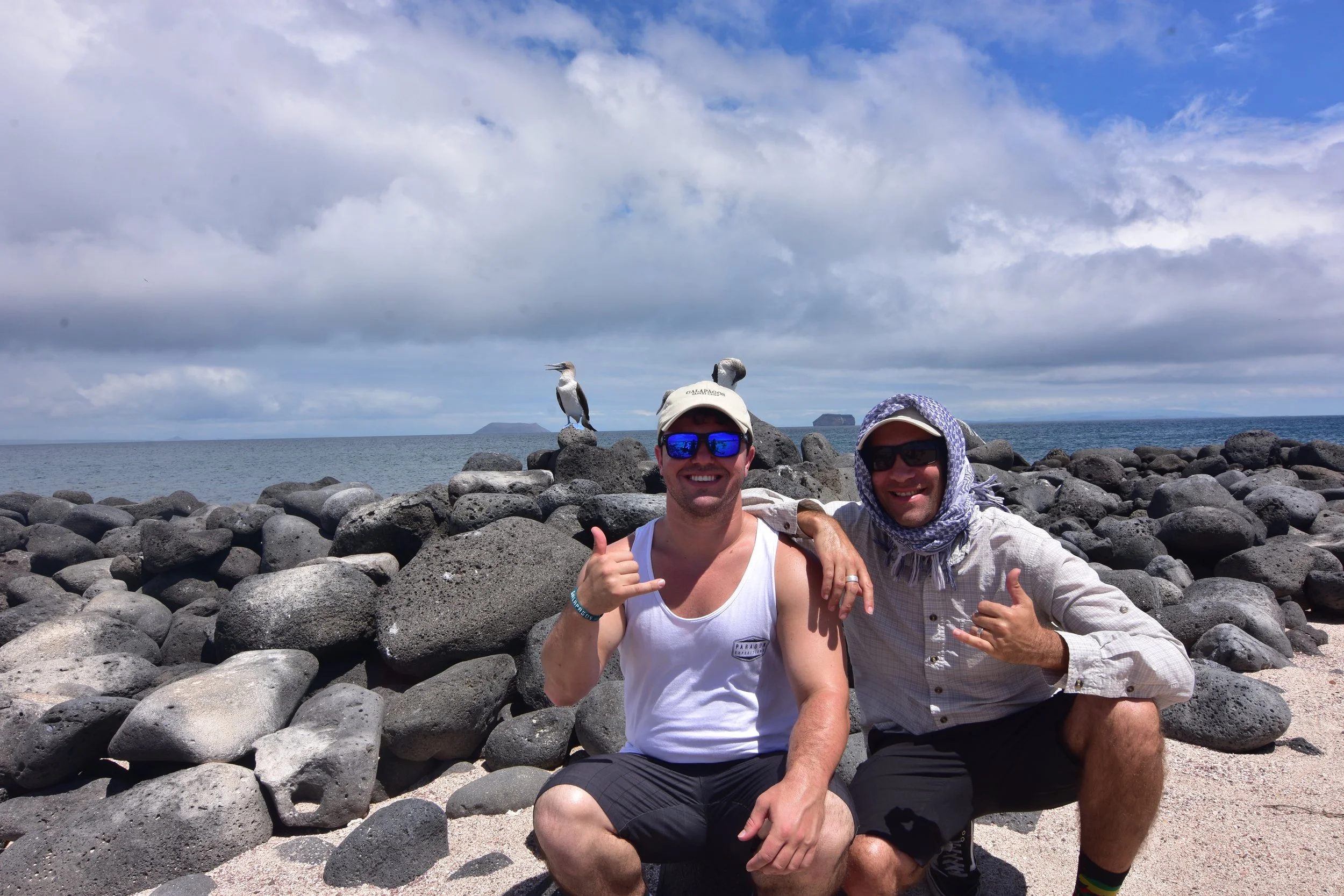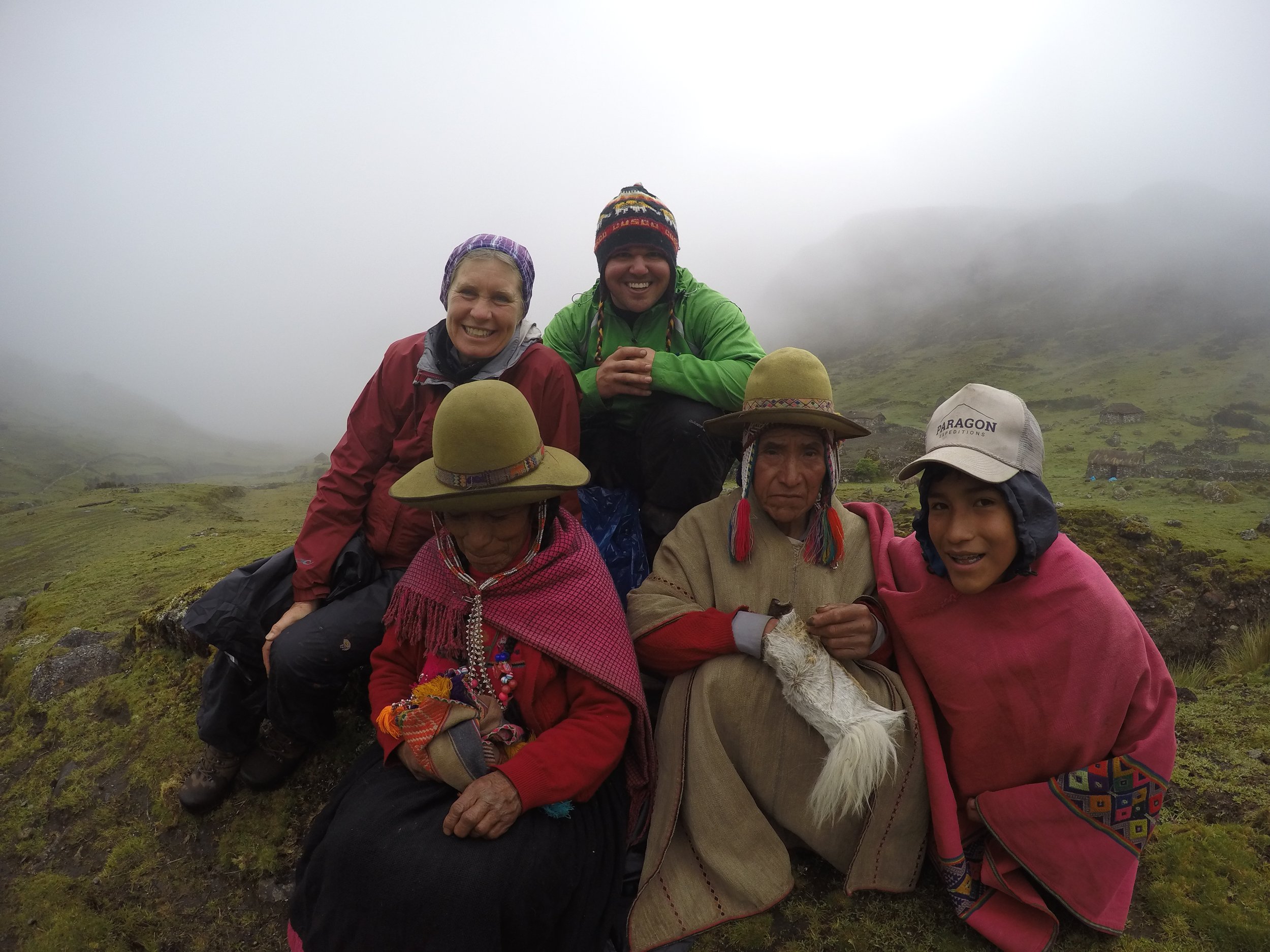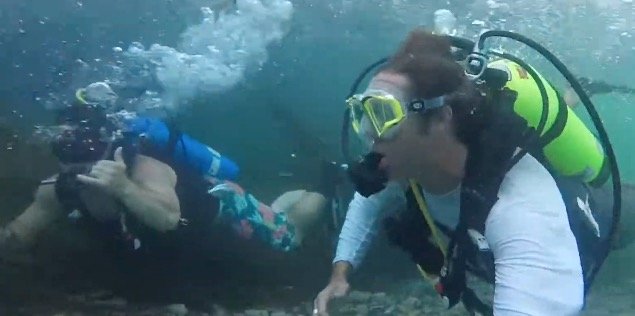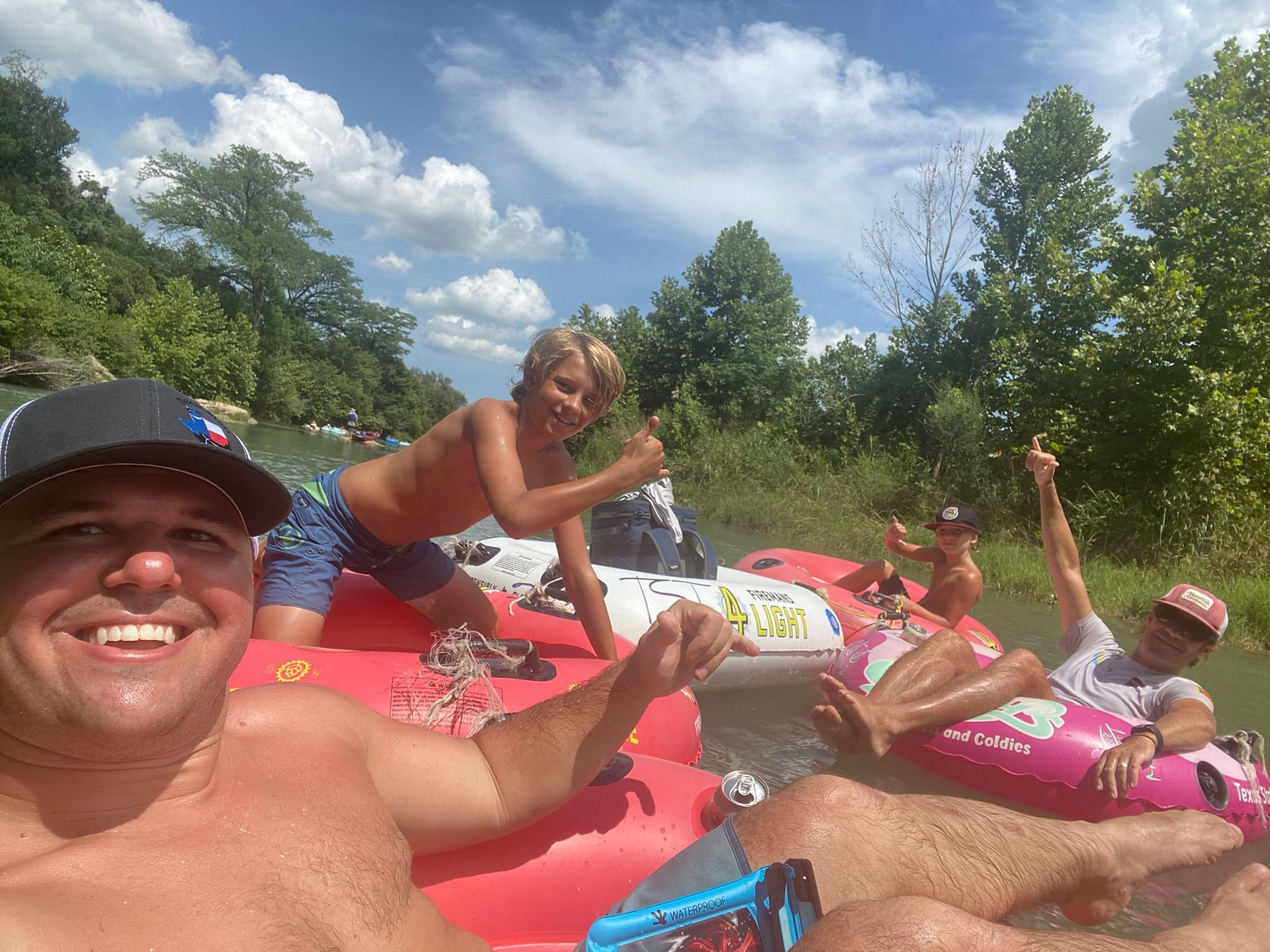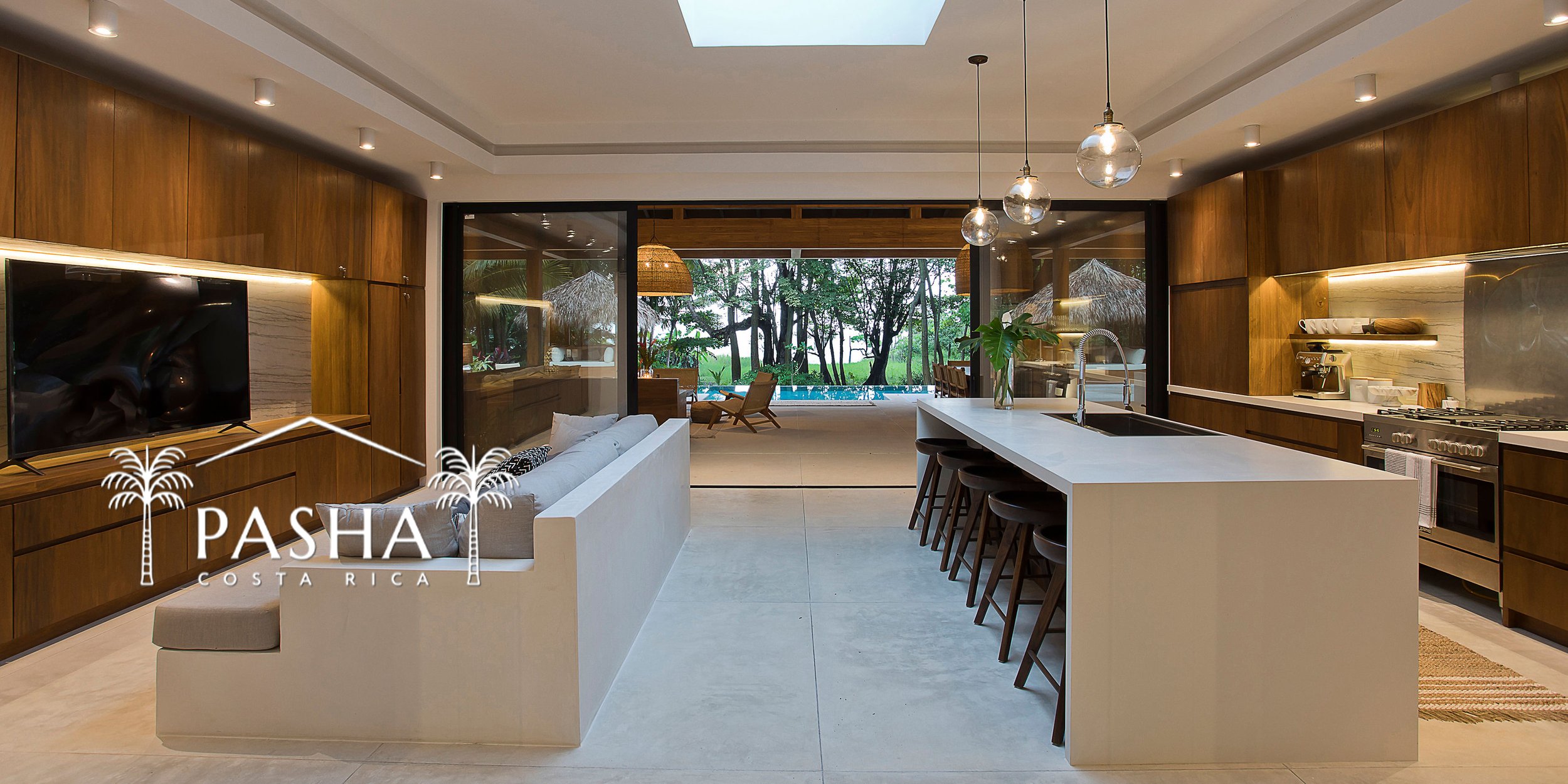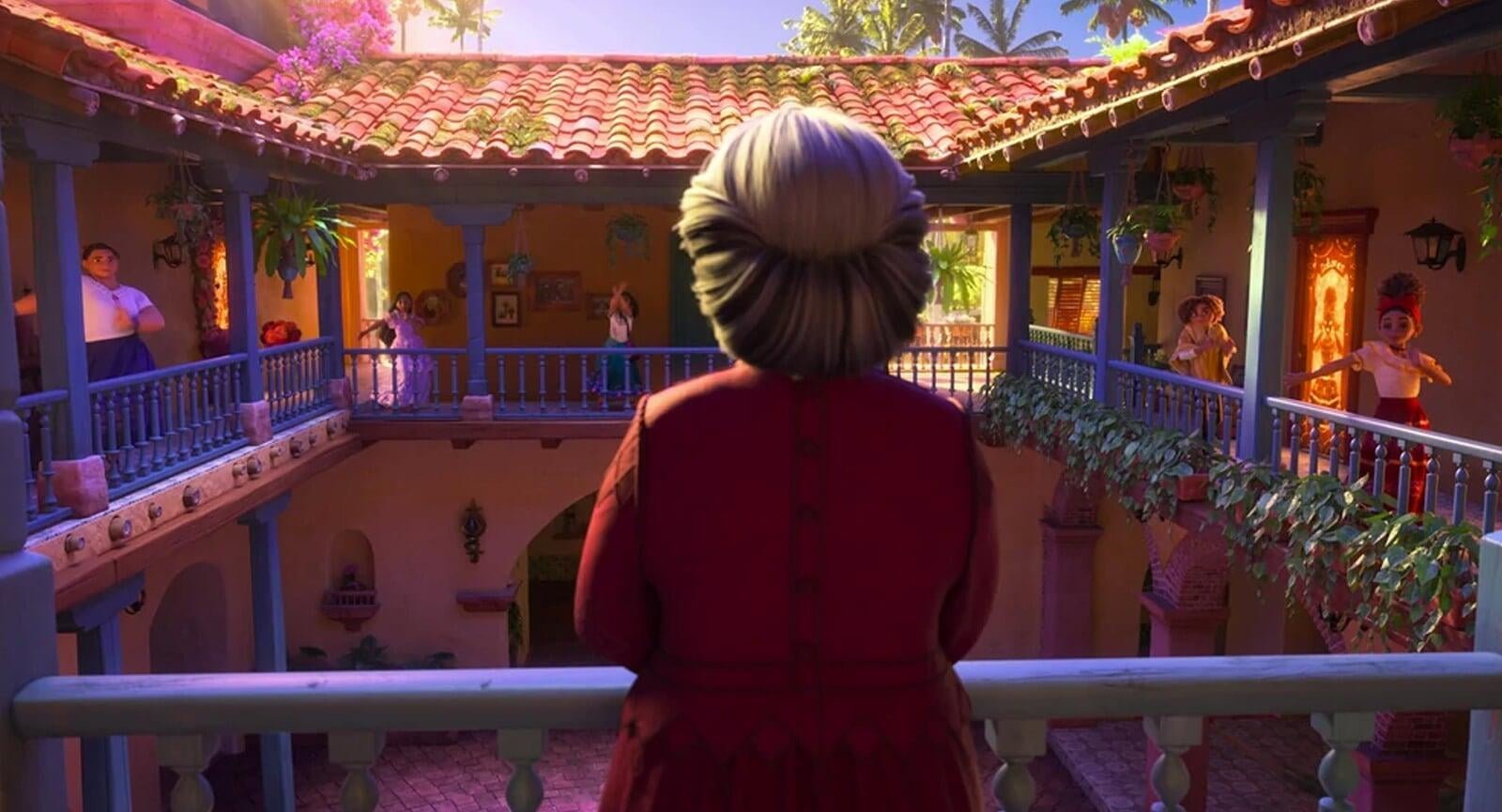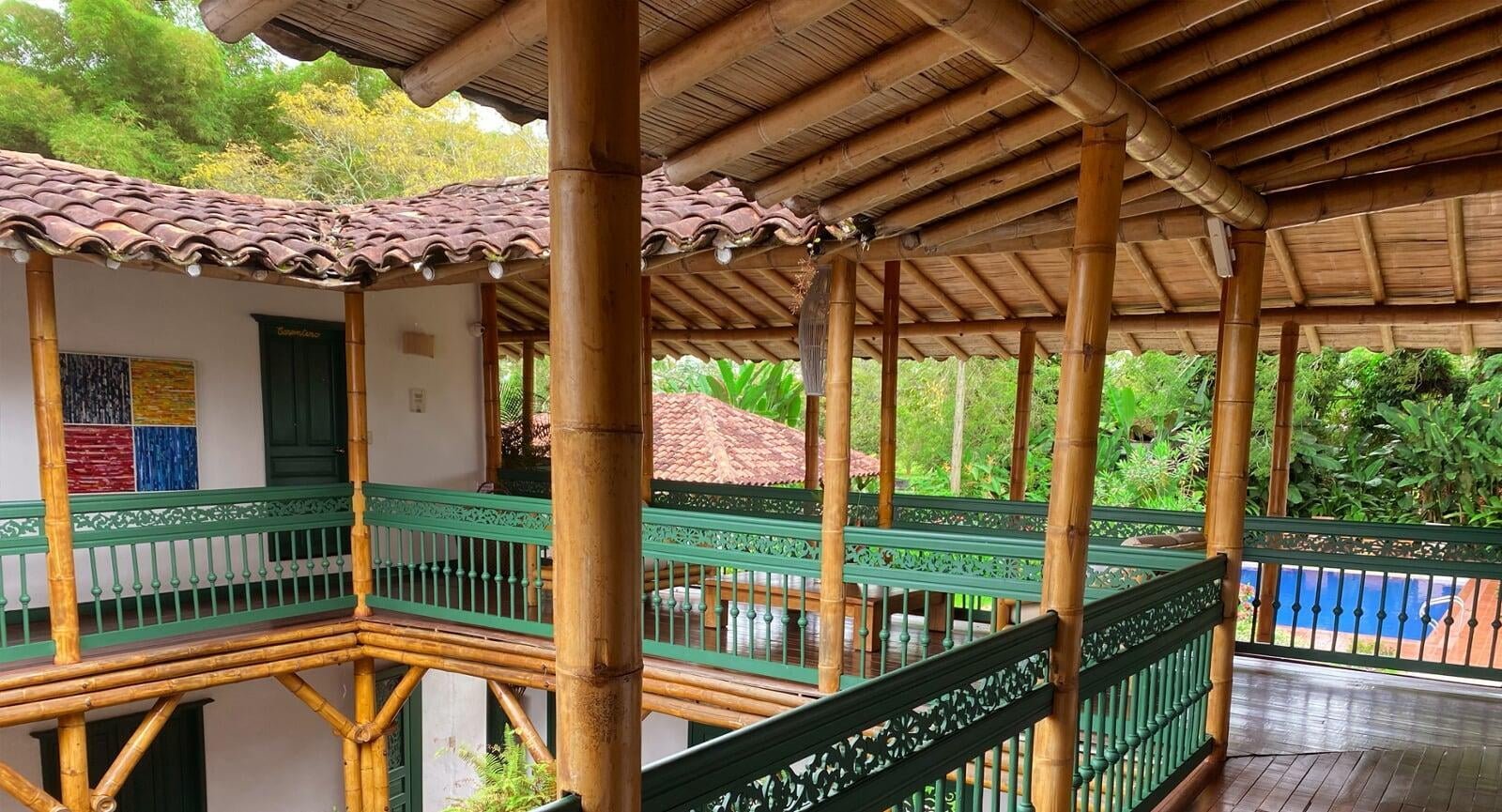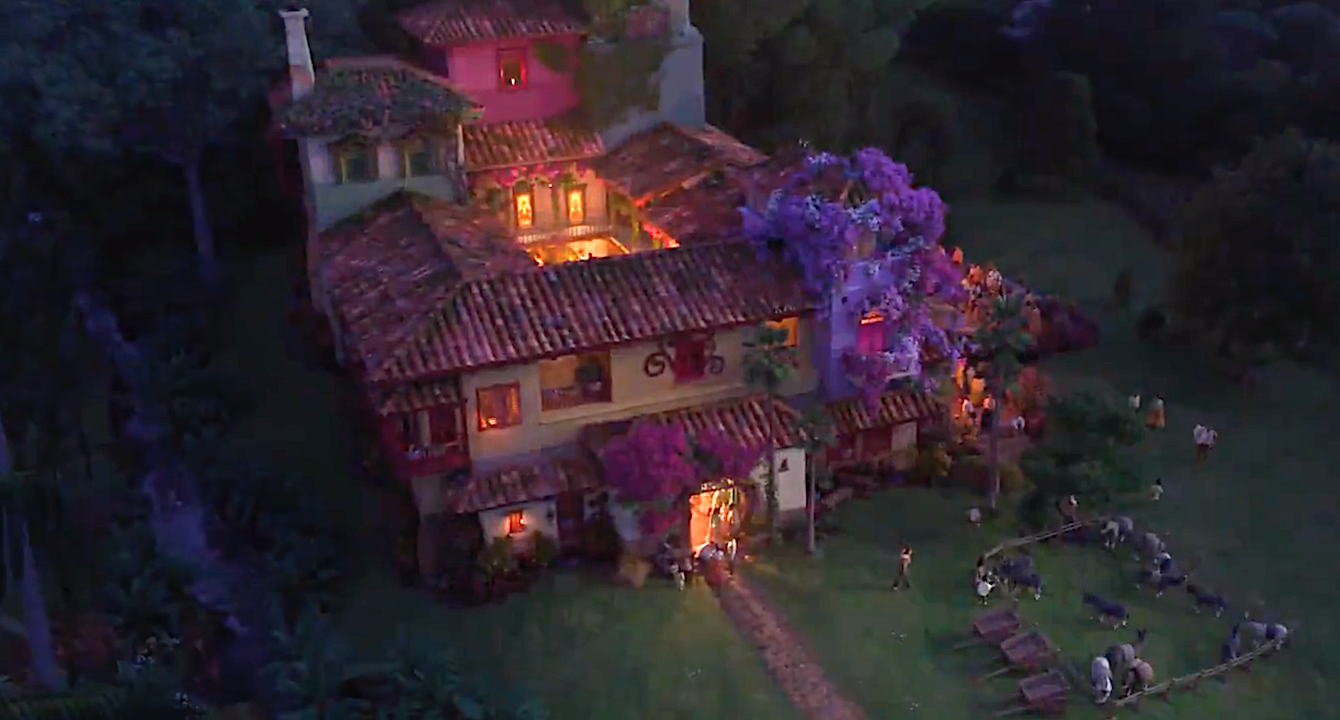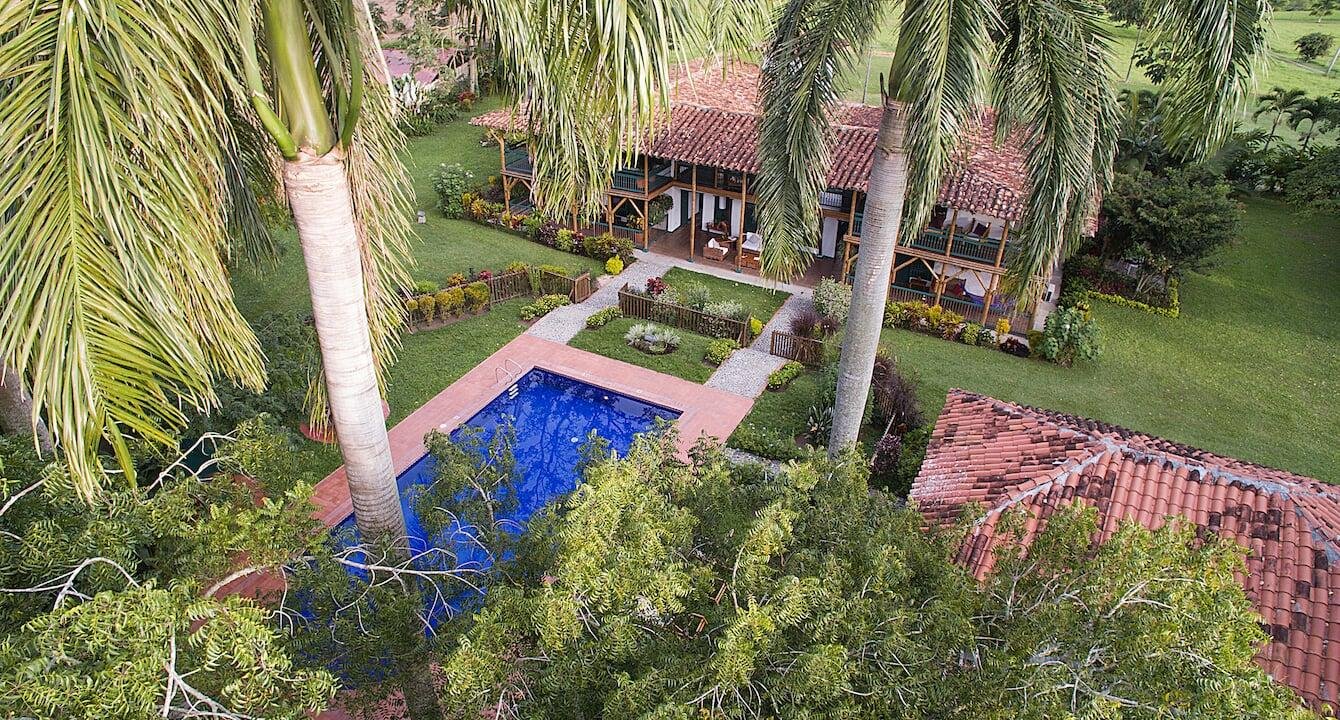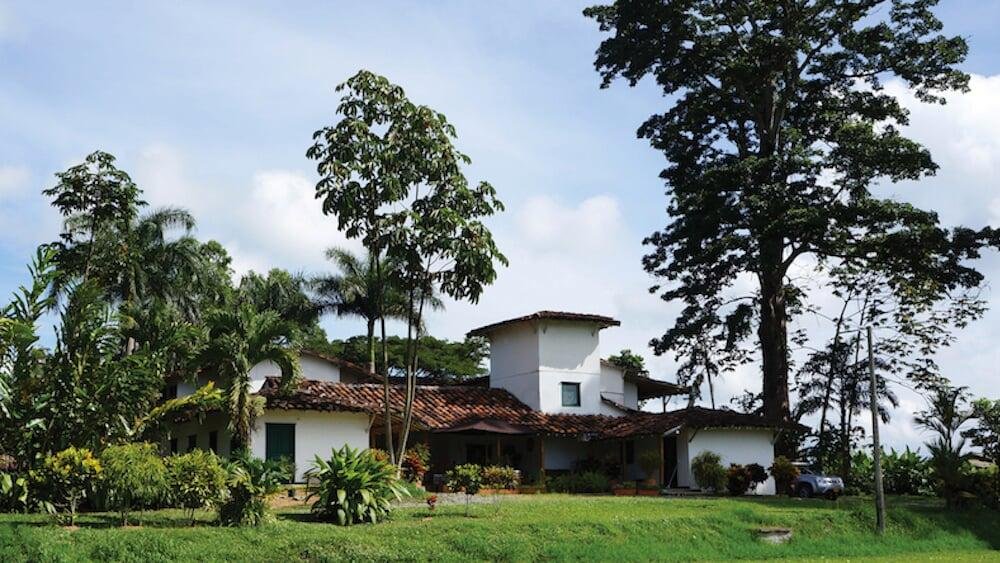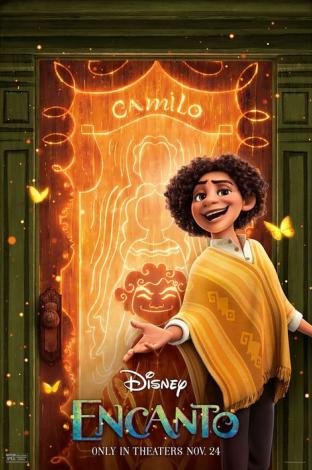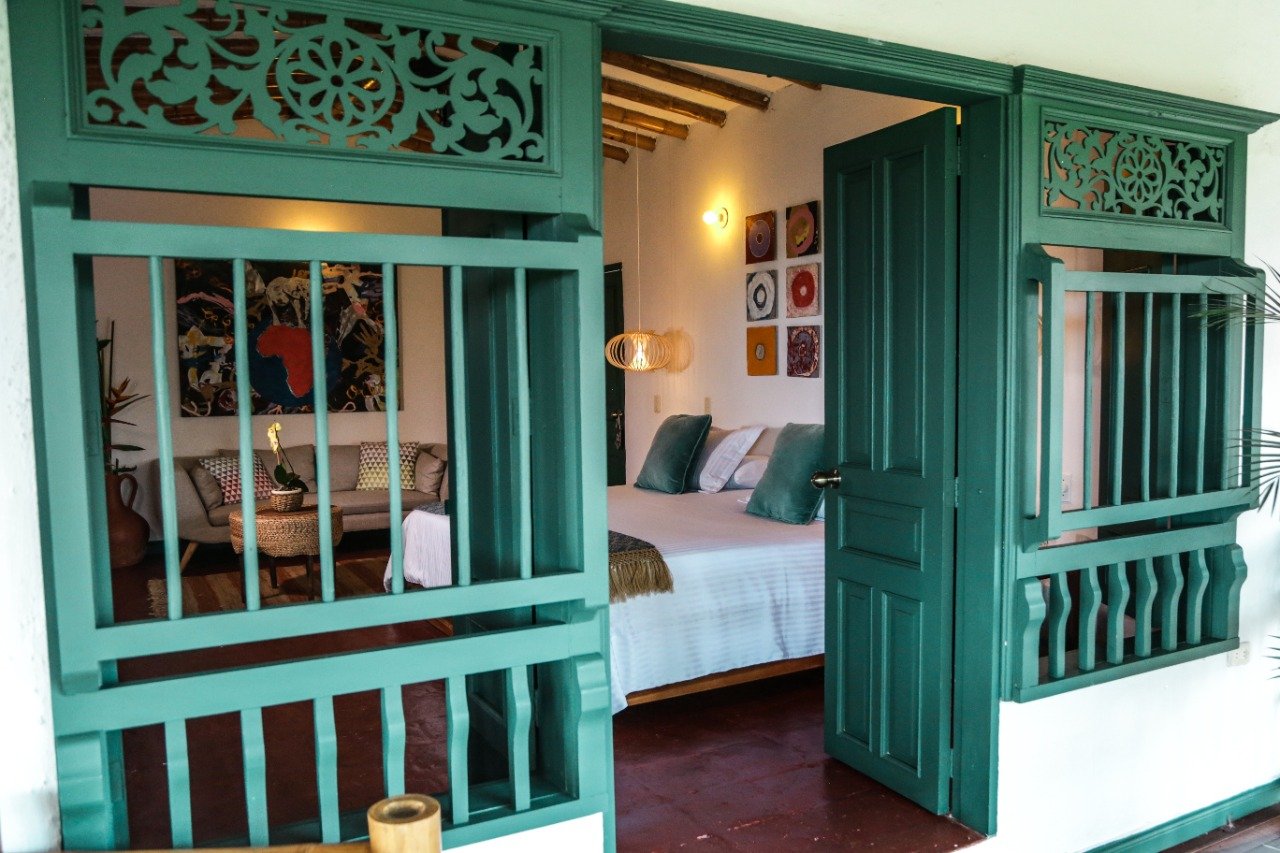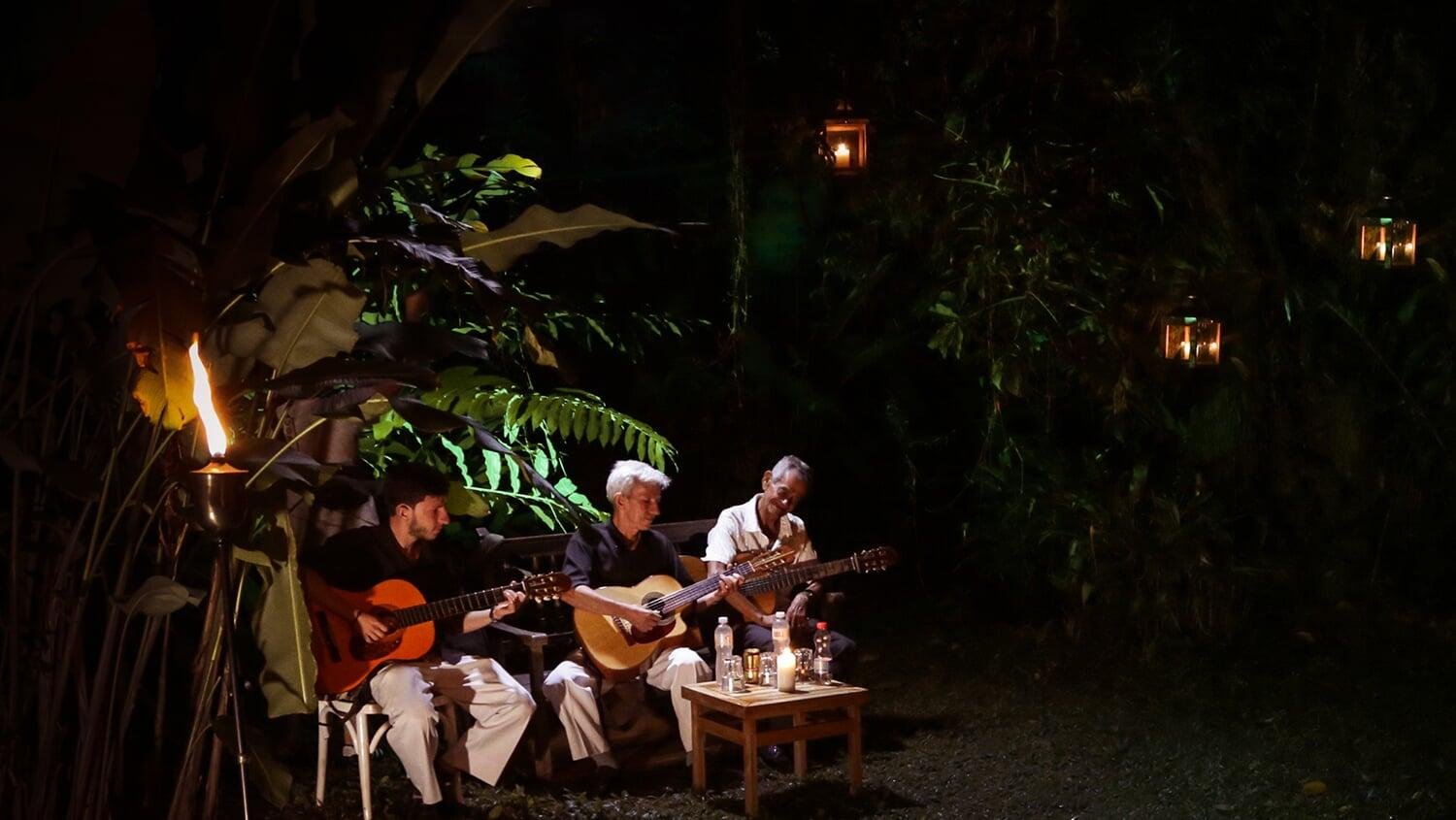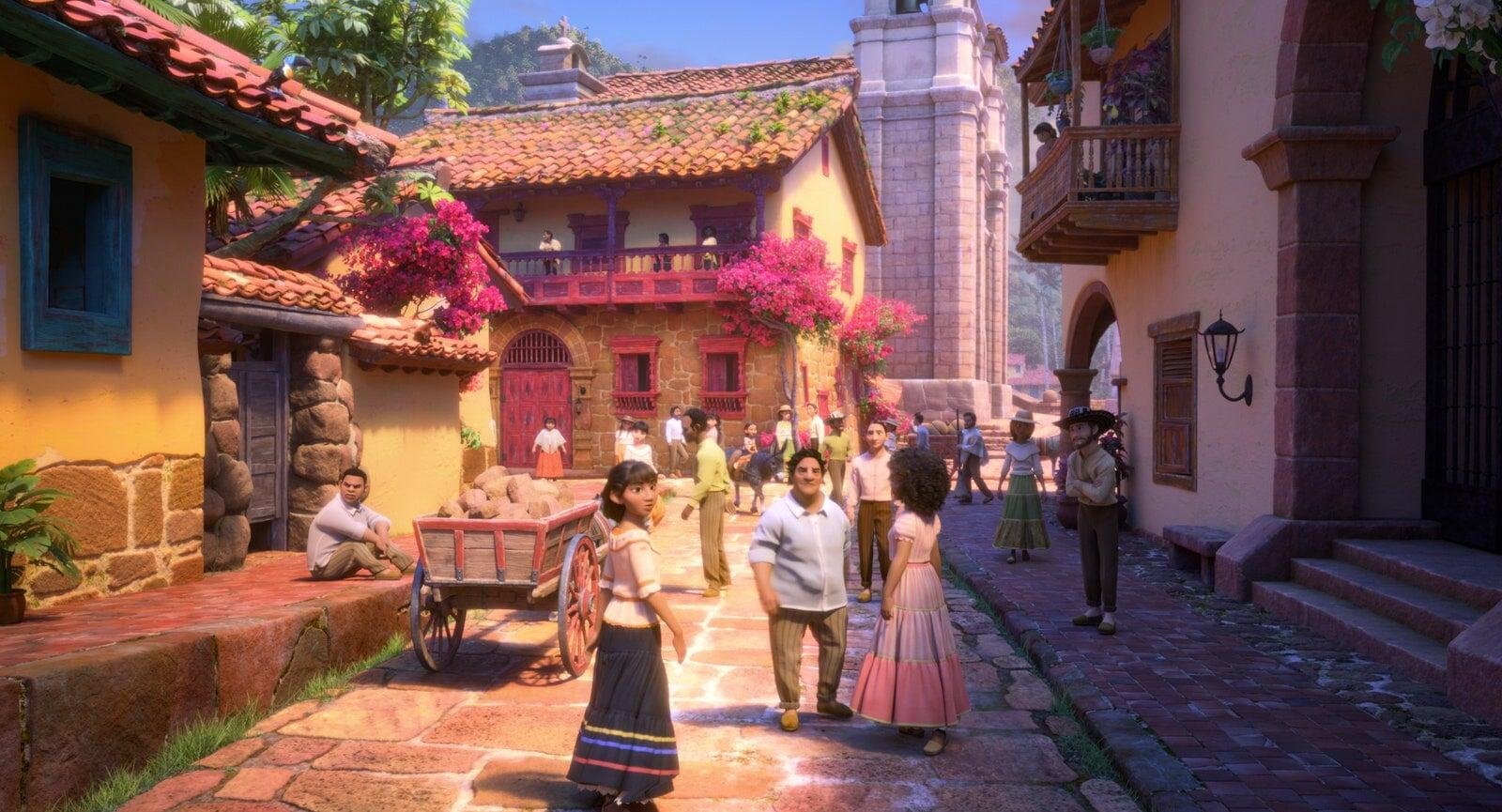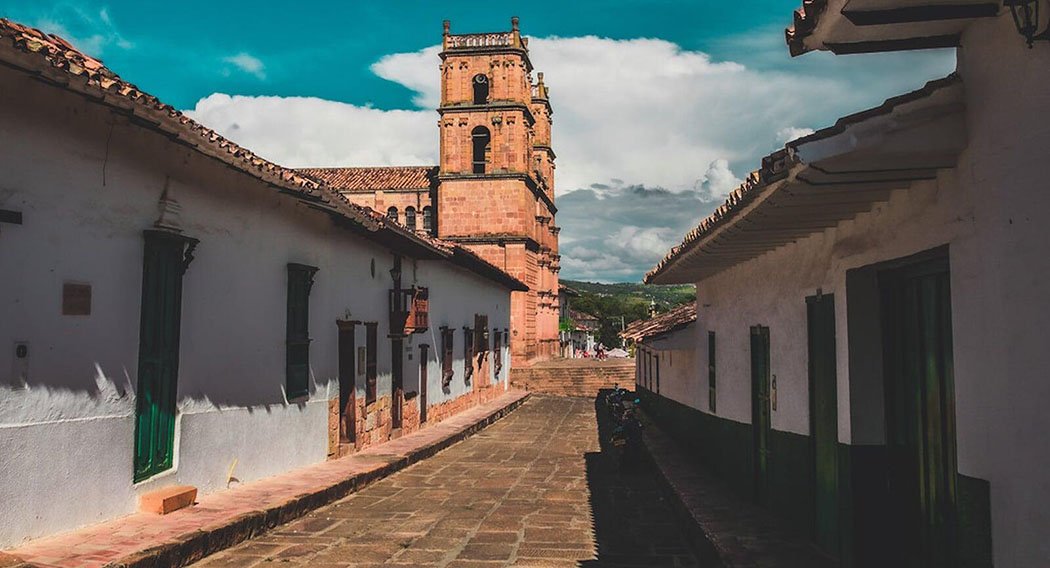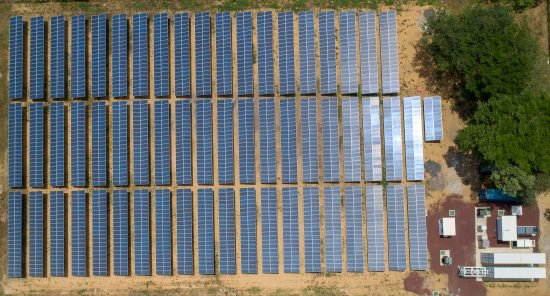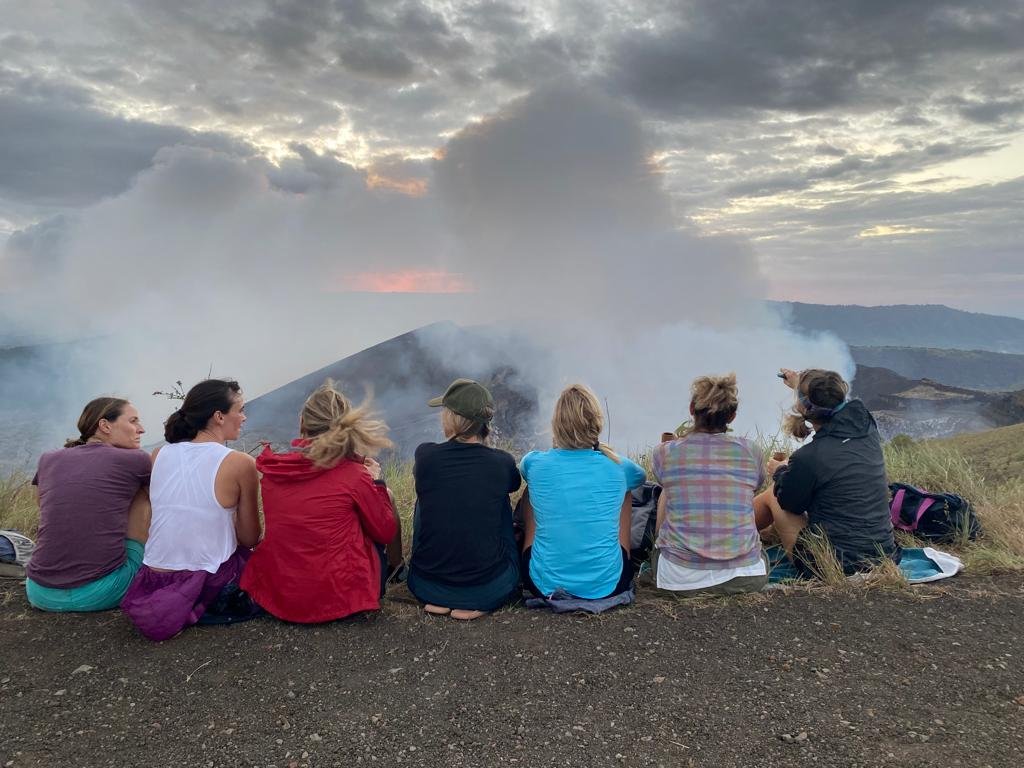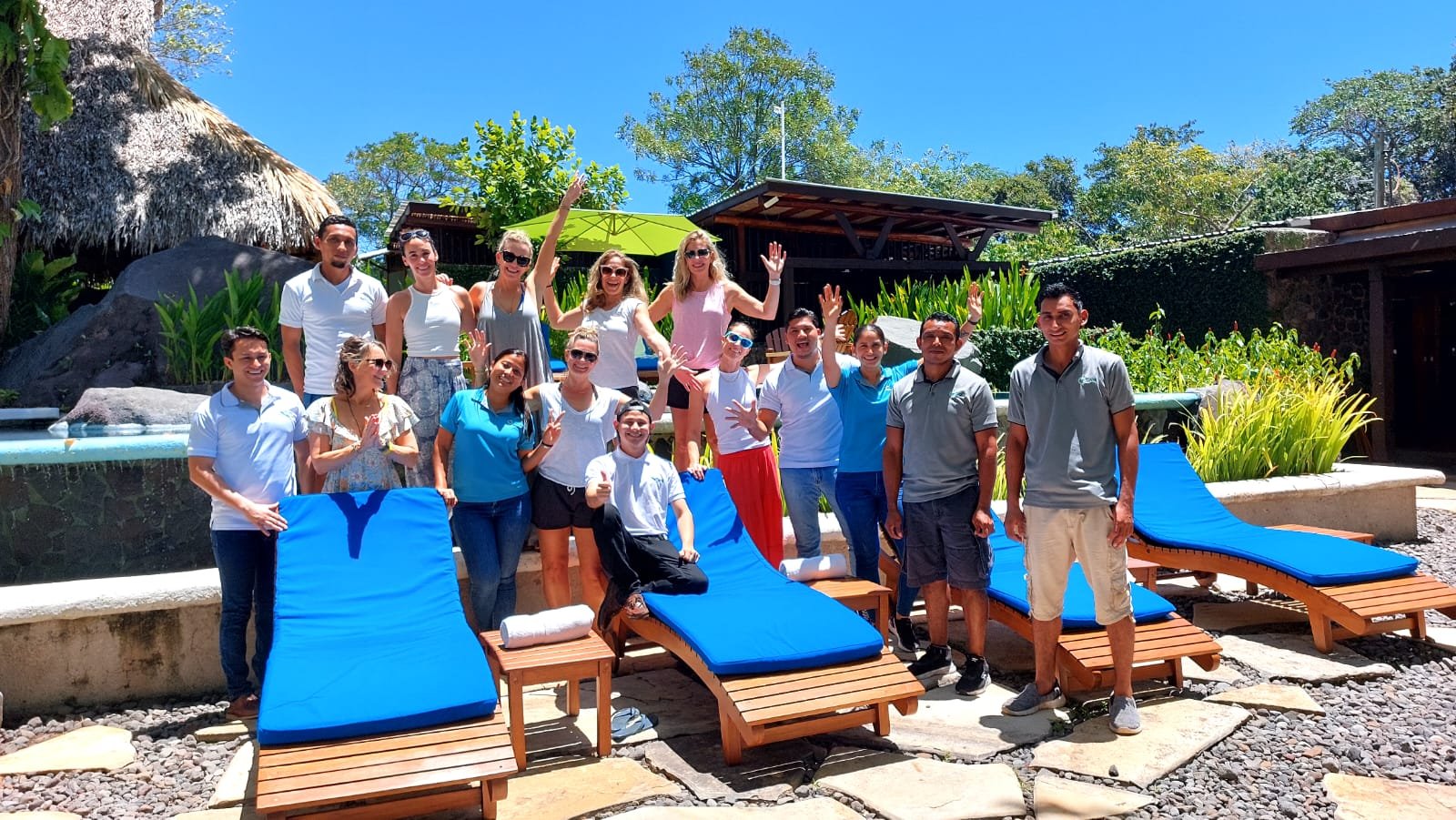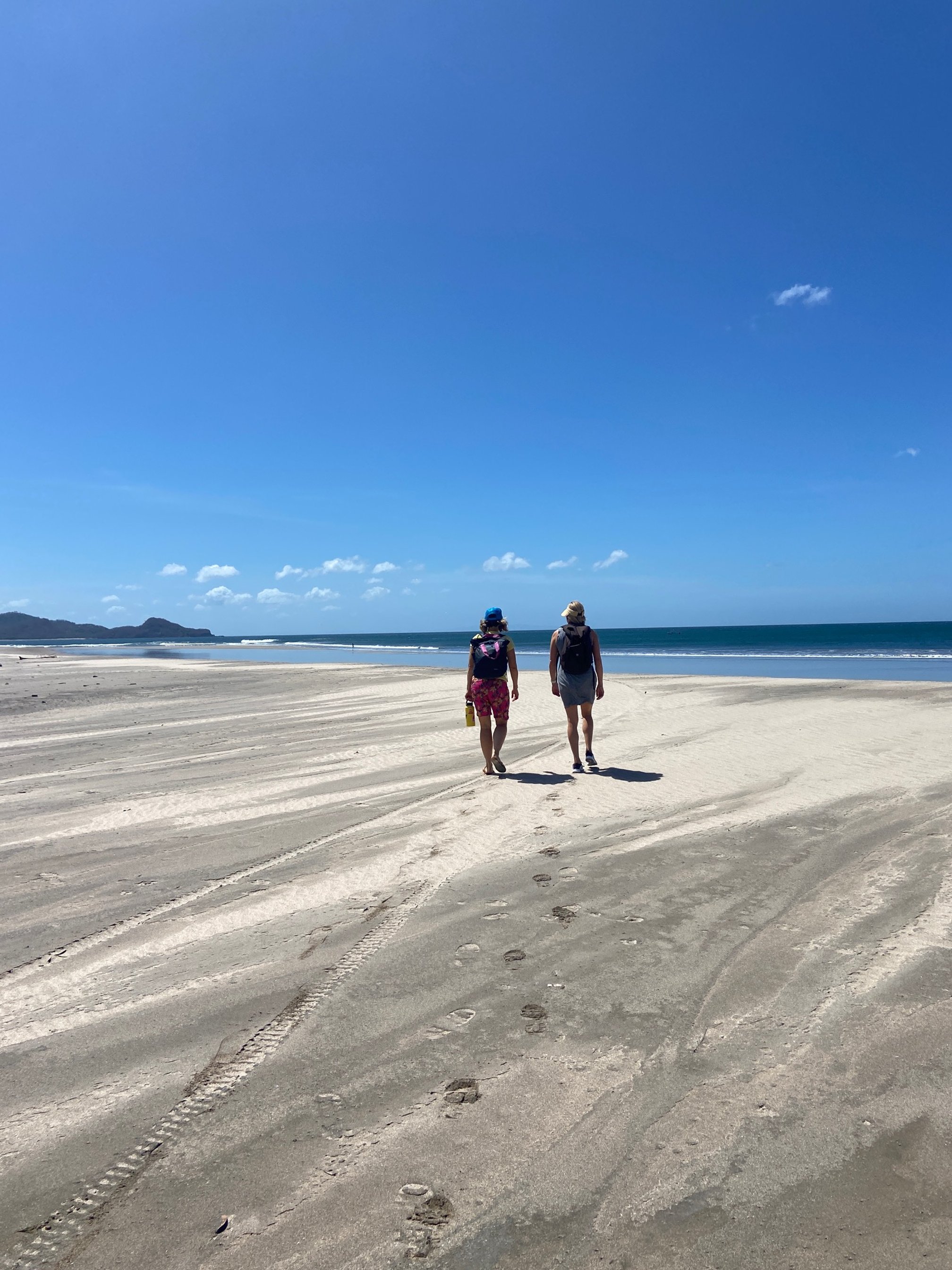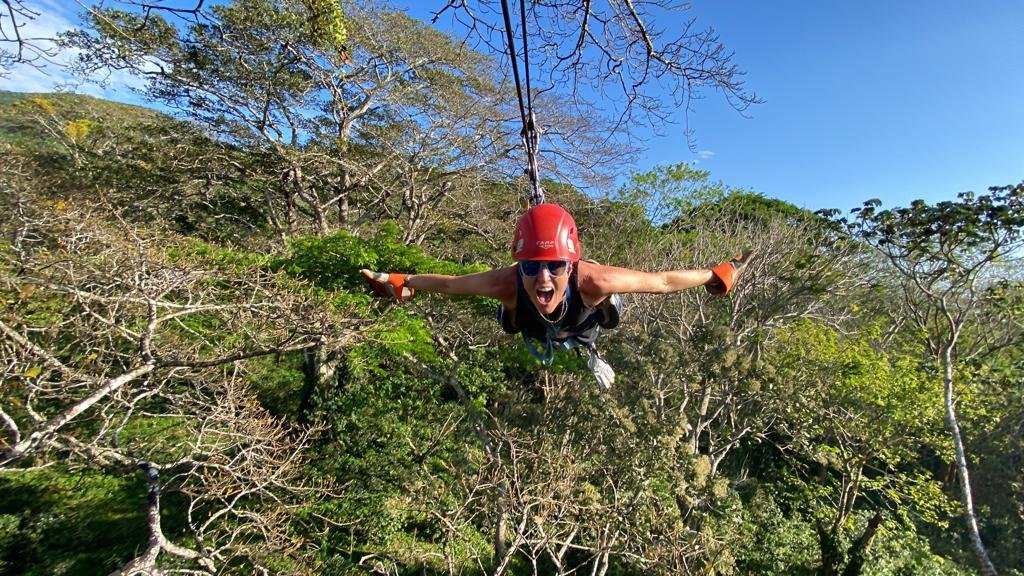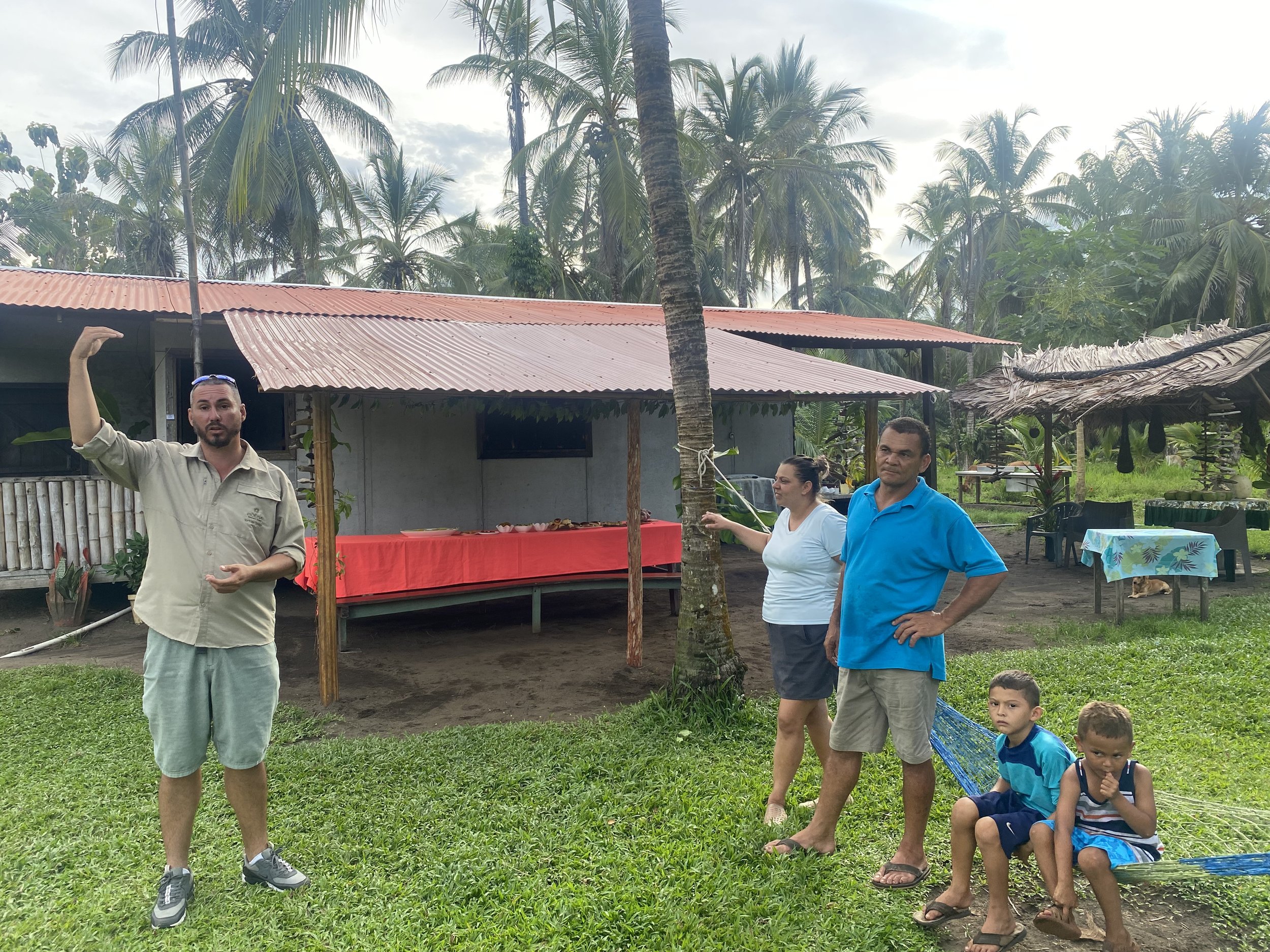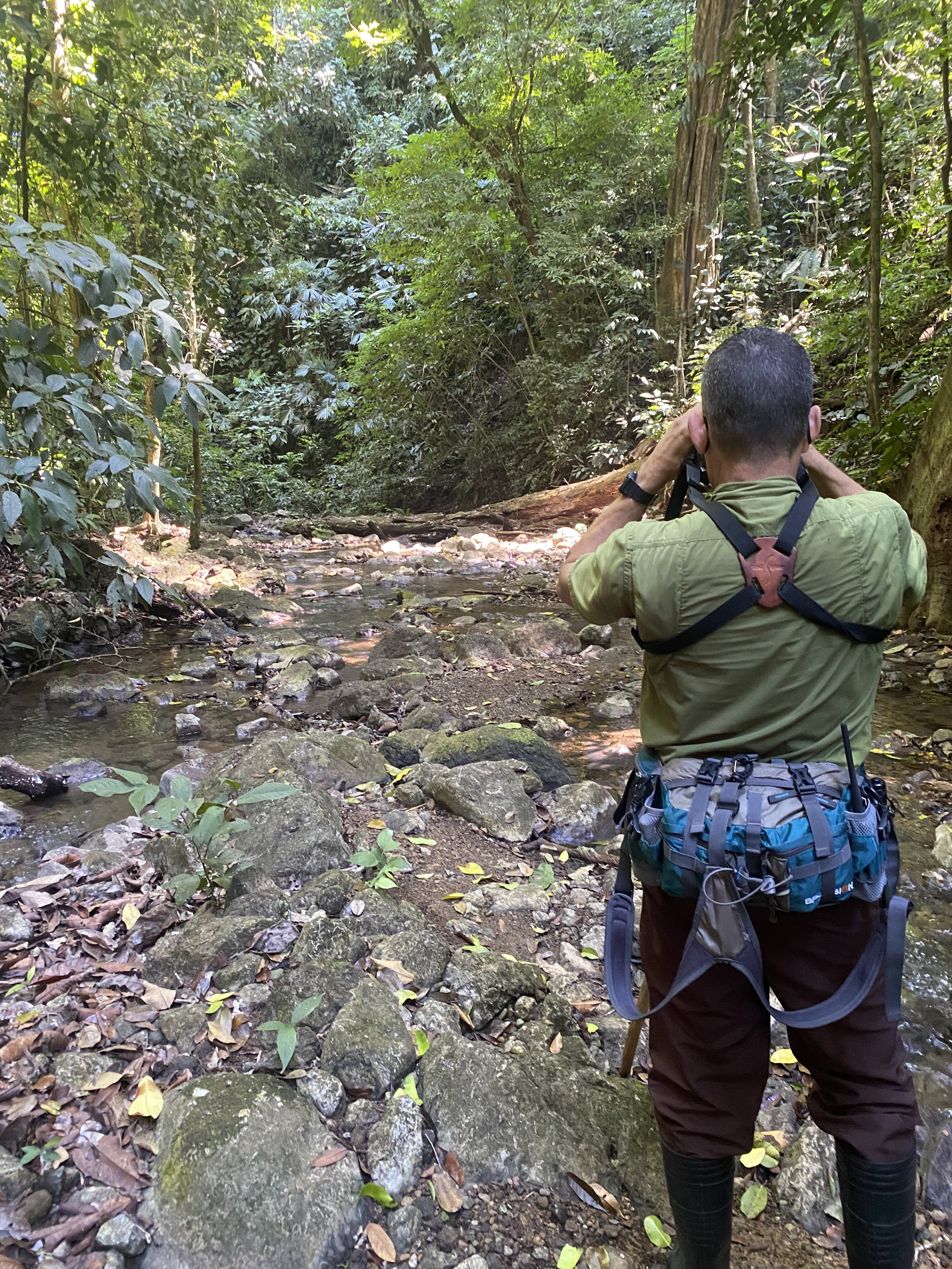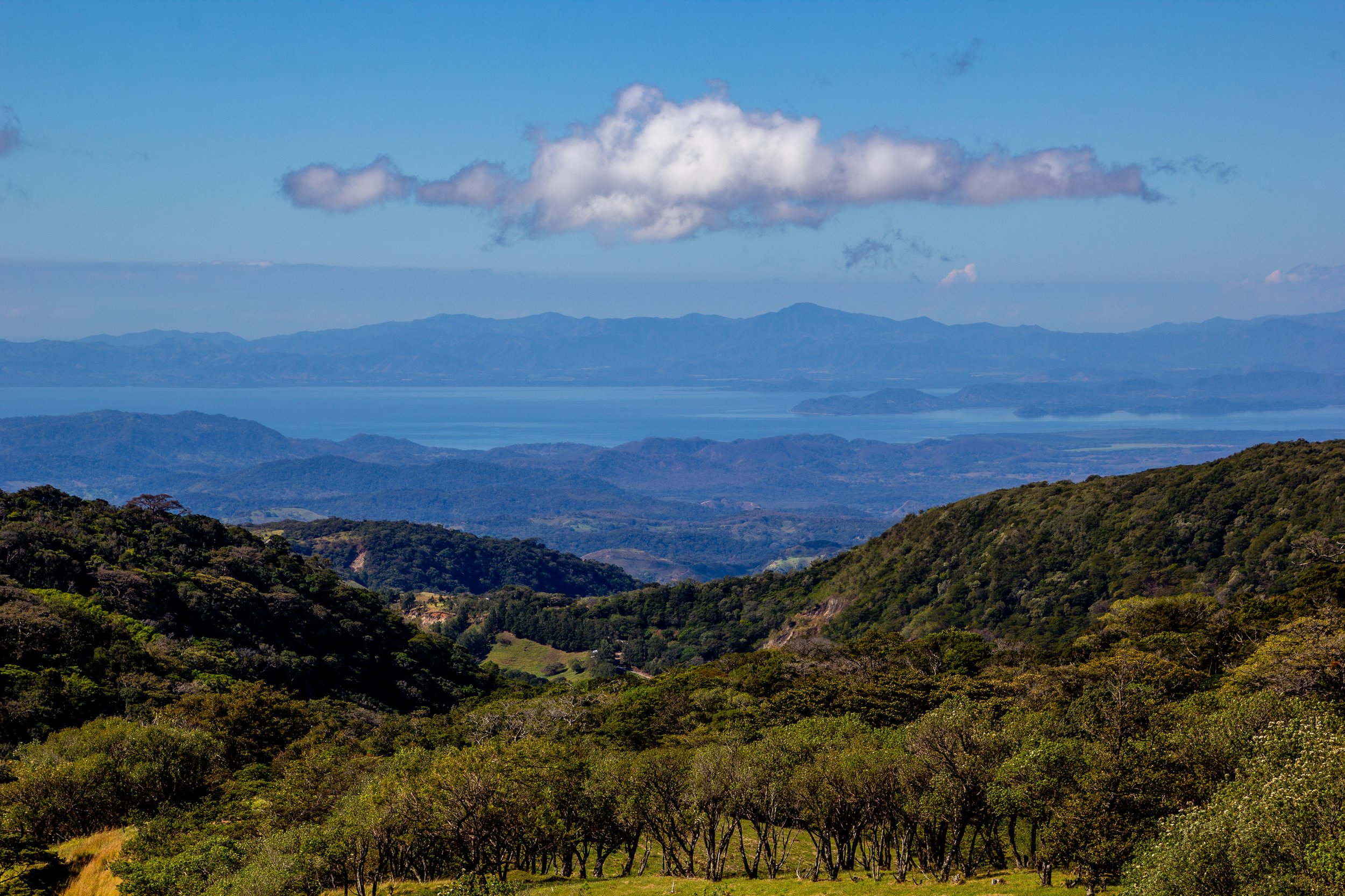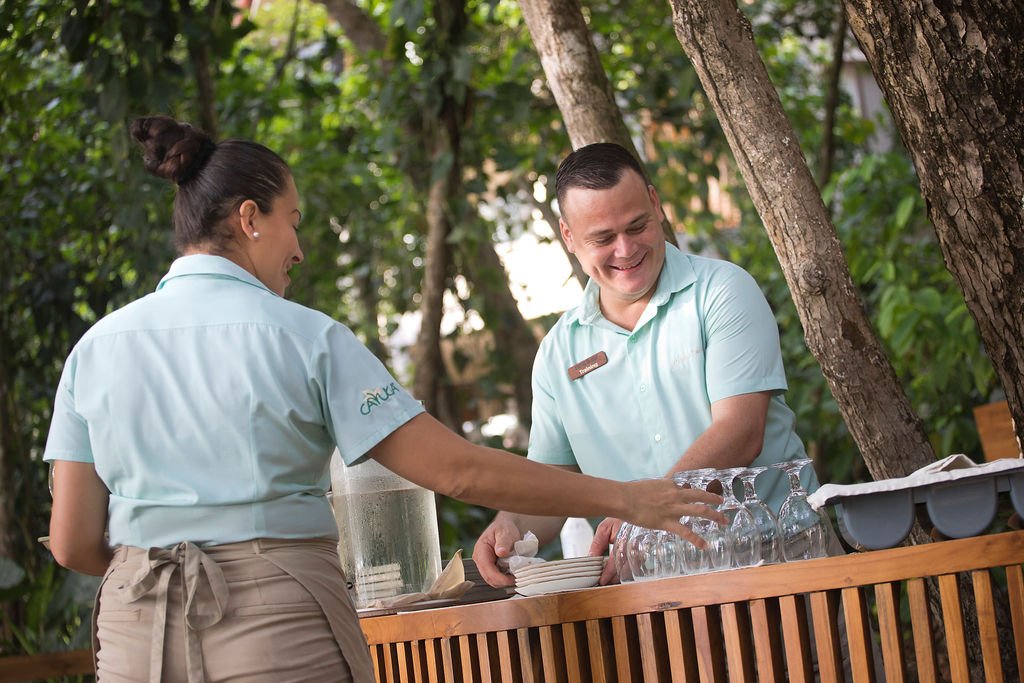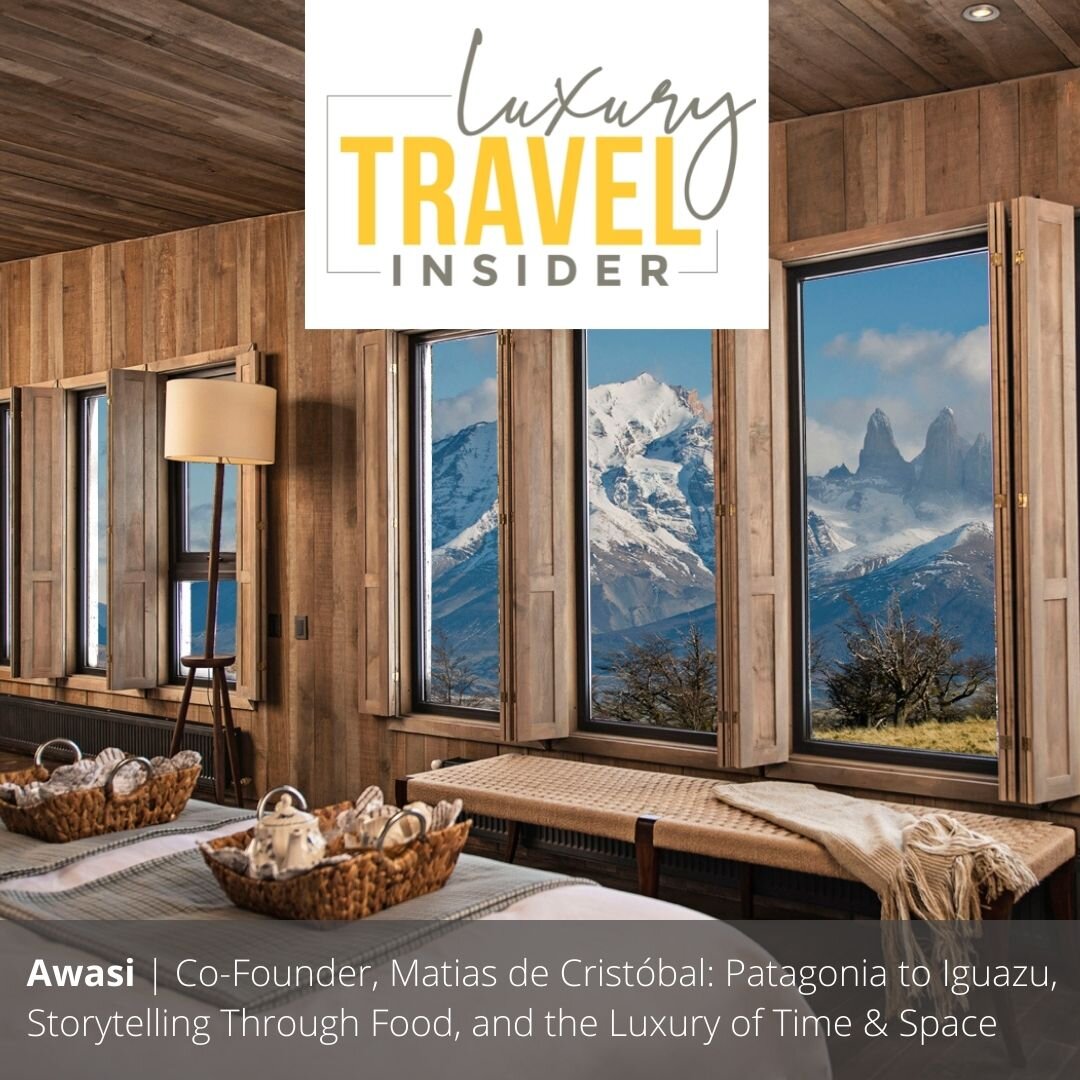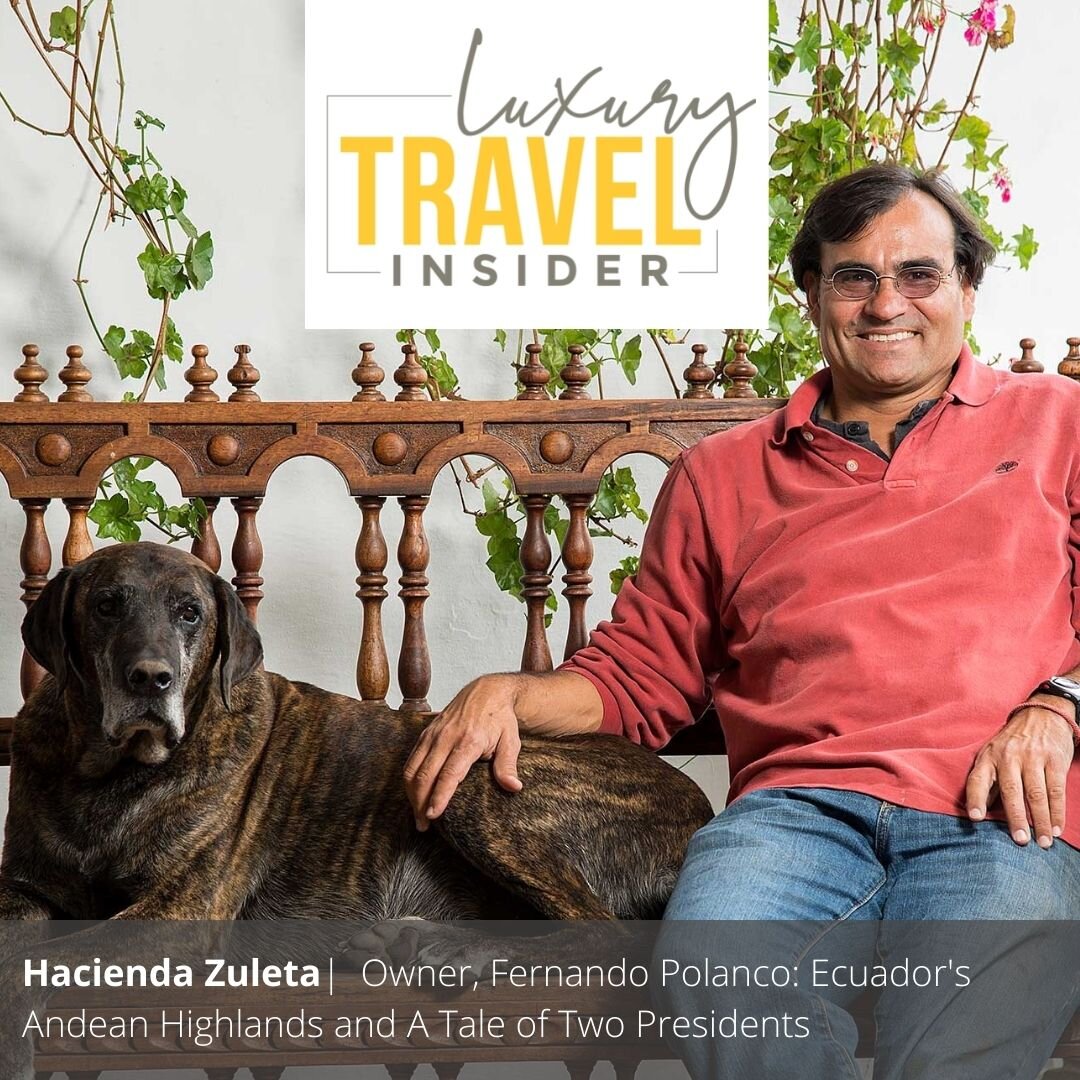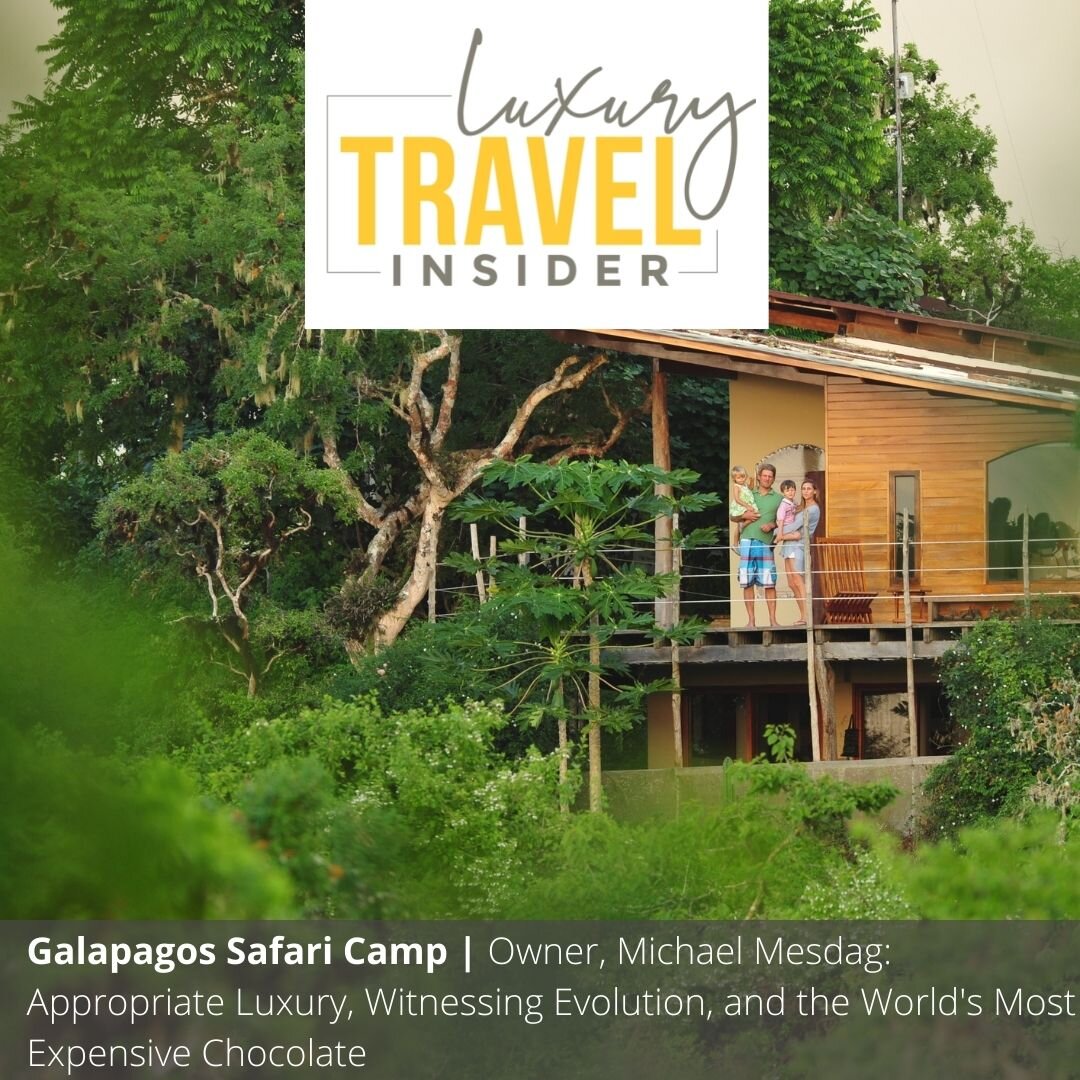Remembering Clark - A Letter From Turney Maurer
A Letter To Our Founder
The other day, I began looking at a Patagonia Itinerary that I had made for Paragon Expeditions back in 2016. It made me realize that Clark was the only hotel or travel representative who ever took the effort to reach out to us, let alone come see us in San Marcos, TX. This is how it all came to be…
It was around June or July of 2015. I had graduated college that May and immediately became employed by Paragon Expeditions after being an intern my senior year of college. I had done a good job during my internship, but what really had me interested in visiting Peru was a friend who I met in my hometown of Austin, TX. He went to the Texas School For the Deaf, but was originally from Peru and was in the process of getting adopted by one of our Paragon Expeditions guides, Holly Wissler. She was a National Geographic History & Trekking Guide in Peru, and had her PhD in Ethnomusicology from Florida State University. And get this, now Holly is a Music Professor at Texas State University! (For more on that story, Hearing From The Heart: Turney & Dante's Adventures in Austin.)
His name is Dante, and he’s from Q’eros, Peru and happens to have Usher’s Syndrome—making him partially blind in his peripherals and fully deaf. Holly met him when he was 6 years old in Q’eros where he was a bit neglected due to his family’s misunderstanding of his rare condition. With the permission of his father, Victor, and his mother (both now deceased), Holly was able to bring him to Cusco in order to get a proper deaf education. Unfortunately, further deaf education in Peru after middle school is difficult to access. So Holly brought Dante to Austin where her sister lived. I hadn’t met them, but Paragon Expeditions Owner Ryan Weaver introduced me and we helped get them mountain bikes.
The initial idea of me becoming an intern at Paragon was because I wanted to create my own Tour Operation where I lead adventures in the Texas Hill Country. So, I thought it was a good idea to begin learning the industry. Nearly 10 years later, I haven’t looked back on that idea too much after discovering Peru and Latin America.
Through working with Paragon Expeditions and becoming close friends with Holly Wissler, I was invited to visit Dante’s village in the Peruvian Andes, a place called Q’eros: one of the last Inca villages that still exists. The native people in this region live at above 14,000 ft elevation, so the Spaniards never made it far enough to find their villages.
In order to go, I had to get permission from my teachers to take my finals early and miss a few weeks of class in order for me to graduate…and sure enough, they all said yes! So in April of 2015 I went to Peru with Holly and Dante. I hiked to Q’eros, the village Dante is from, saw Machu Picchu, and explored Cusco. Mind you, this was my first time out of the United States of America at 23 years old!
Me, Turney, in Q'eros, Peru with Holly, Dante, and his Quechua-speaking grandparents. They are some of the last living Inca descendants.
We ended up biking with Holly’s friend, Paul Cripps, at Huaypo Lake to the Salt Mines of Maras and down into the Sacred Valley. I posted that video onto our company Facebook a few months after. Little did I know that would be my bridge to meeting Clark. When I became a full time employee of Paragon Expeditions, I was requesting marketing packages from different Patagonia hotels. I sent one to Awasi, and got an email back from this Dude/Bro named Clark. He sent me an email that said something like, “Hey dude, I saw that you reached out to Awasi and want to put them up on your website, but I saw on Facebook that you went mountain biking with Holly? Do you know Paul Cripps??”
After that we connected on a call that lasted a few hours. Clark told me that us boys at Paragon were crushing sales at Inkaterra and Titilaka and Hotel B, so we need to start selling Ecuador and Galapagos. He also could not believe that I was only 23 years old!
Clark ended up deciding to roll through Austin for sales calls a few months later and he wanted to meet up. I remember telling him, “Dude, I’ll be honest with you I live in San Marcos which is a college town about a 30 minute drive south from downtown Austin. Come down here, and I’ll show you around. I can take you paddle boarding on the San Marcos river, we can do some scuba diving, hit up some bbq, and check out some bars on the square, maybe even throw on some boots and hit the dance hall.” He said:
“Okay, Sounds good dude I got us on drinks and BBQ. I’m going to get a hotel room on I35 at the Holiday Inn so I can book it to some meetings in Houston the next day.”
I didn’t really understand at all what a hotel representative was or what Clark really did at the time. I was thinking: “This rad dude who is super well connected with the absolute most badass adventure lodges in Latin America wants to hang out and be my friend? Okay, I am absolutely down.”
We ended up doing all of the above, and more. The next morning he delayed his first meeting so that we could scuba dive in Aquarena Springs (the source of the San Marcos River) where no swimmers are allowed, but I had access being a volunteer scientific diver for the springs, and Clark being a Divemaster I was able to get him in with me. Of course, Clark knew another diver who worked at the Meadow’s Center, the museum and scientific study lab of the San Marcos River. If you’re reading this, shout out to you Rob Dussler!
Clark and I scuba diving in the San Marcos river.
It was epic, and afterwards I hit him with a custom maroon and gold TX State Bobcats custom-made Paragon Expeditions hat which he rocked everywhere for several years for some reason. It always fired me up to see. I’ll never forget when he was about to leave he literally said, “Dude, I totally forgot to give my presentation, I’ll email it to you and we’ll keep in touch. Just keep killin’ it Turn-Dog!”
I’ll never forget those words because that day Clark became a mentor in my life and someone that I could count on for advice with an honest answer. We kept in touch over the years, and I went on one of his FAM trips to the Galapagos Islands in May 2018 with the most legendary group of people from literally all over the world. He truly assembled a dream team for that trip—our marketing guru Whitney James was on that trip as well!
The epic FAM Trip group in Ecuador - May 2018.
He made sure to get a picture of the outfit!
I’ll never forget, Clark told us to pack nice clothes because his friend invited us to one of the finest restaurants in Quito, ZaZu. So, I packed a suit and cigar, rolled out to the lobby of Casa Gangotena in my newly-fitted dry-cleaned suit with cigar in front pocket, glass of Pisco in the other hand. To this day, I’m not sure if I ever saw Clark laugh that hard. He couldn’t believe that I took his suggestion so literal. He was always sure to never question my first impression ability or swagger after that one!
Eventually, Clark hooked me up with a job at Latin Excursions. After Paragon, I had worked at Facebook for a bit. I called him one random day about six months in and go “Clark, you gotta help me get out of this damn job, I’m losing my mind stuck behind a desk.” He goes:
“Okay dude, I got you, I’m at Remote Travel Show in Costa Rica, I’ll hook you up with someone here.”
The next day he had me on the phone with the owner, Eric Sheets. After that convo, the next week I was working with Latin Excursions doing a bit of itinerary building for all of Latin America, some representation meetings with different travel agencies. We sold lots of Panama, so I was invited to go on Kirsten’s FAM Trip to El Otro Lado and Isla Palenque. Kirsten Gardner is the Owner of Outlier Journeys and was the Central America Portfolio Manager for CK before I was.
That was an amazing experience because I got to see how Kirsten ran her FAM trips very similarly to Clark’s. That was another amazingly orchestrated group, a few who I now consider great friends.
I began to notice that all of the hotels in CK Rep portfolio that I had visited shared a common trait of creating truly authentic local experiences for their guests. If you’re open to learning about new cultures and exploring pristine wildlife areas, your mind will be truly blown away at any of the hotels in CK Representation portfolio. The staff members become your friends, and the hardest part about visiting any of them is leaving.
Then, the pandemic happened and everyone lost their travel jobs. CK Representation stayed alive and Clark said, “F this, I’m bringing my family and we’re going to show the world that it is still okay to travel.” Looking back, what he did was truly honorable and gave a lot of people hope that things would go back to normal. I ended up working a tech job in Austin, but seeing Clark, Jacqui, Blake, and Carter full sending it to Latin America again fired me up! It was a reminder that there is a breath of fresh air on the other side of this thing. We just have to keep moving forward.
In the midst of all that, my father passed away due to a stroke at the age of 70 in July 2021. Simultaneously, my pandemic job was not panning out because the startup company that employed me during that time burned through all of their money, fired everyone, and was trying to give me their company due to the fact that I had the highest consecutive sales numbers. However, they were paying me the bare minimum after laying everybody off and still to this day I’ve got no clue what the heck they were trying to do handing me their company. This nonsense went on for 6 months after my father passed away…I was seriously struggling internally, going through one of the roughest times of my life scraping by financially and mentally. My oldest sister Rachel had passed away when I was ten years old and she was 18, due to a car accident. She was my driving force all this way, but then when my dad passed, it felt like there was no gas left in my tank. My job was crumbling, my father was gone…I was ready to give up.
This is the kind of person that Clark is. He called me not long after my dad had passed and said that he was going to be in South Padre Island kiteboarding with the kids, but he wanted to take his boys floating on the river with ole Turn-Dog. So he drove five hours with the boys to come meet up in San Marcos. We had an epic time. I’ll never forget when we were getting off of the river, a huge thunderstorm and lightning storm hit. Blake and Carter were freaked out because they grew up in California drought and have never seen Texas thunder. Clark thought that was the funniest thing ever. Of course, we got out safely before the rain hit, perfectly on time.
Me, Carter, Blake, and Clark floating the San Marcos river.
Before we left, Clark said, “Hey man, it seems like Kirsten is going to go do her own thing and start a Tour Operator which is fine, but I might need someone to come work for me next year. Keep your phone on.”
He knew everything that was going on in my life and never brought any of it up. We drank a couple Shiner Bocks on the river and just hung out while people-watching with Blake and Carter. It was one of the best days ever, and he subtly delivered a message of hope and positivity to me when I needed it most. All around solid guy in the most nonchalant way. A true legend.
One December afternoon in 2021, I got a phone call. First I believe it was Kirsten, then Clark afterwards. They both separately said to not tell one another, but they were going to recommend that I should come work for CK. I said okay awesome, sounds good, let me know.
A few days later, right before the holidays, Clark called me and said, “Dude, I talked to our Central America partners and they all said we’re good to go. Do you have a wife and kids? Can you leave your other job? Are you able to go down to Costa Rica for a month ASAP?” I said:
“Clark, you’re literally saving my life right now. I thought I was about to go bartend or work construction. Also, no dude. I saw you two months ago and I’m still not married and don’t have kids. Let’s do this thing, I’m ready.”
Right afterwards, I called the startup and said adios. I literally had no money after quitting my job right away, so Clark had to buy my flights to Costa Rica and get me down there. About a week into the trip, I needed to get a rental car which I had never done before anywhere in the world. In order for me to pay and survive, Clark had to send me a company card. This man somehow sent my company credit card to Enterprise Costa Rica, had them take it out of the DHL package, and store it in some drawer by the concierge desk. At first they had no clue what I was talking about, but then when I messaged Clark he was like “ask this one lady Lisa—she was being nice to me on the phone and stored it away for you.” Pays off to know Spanish!
Sure enough I asked the other lady and received the company card to get my rental car and continue on. ONLY CLARK COULD PULL THIS OFF. The rest is history. I spent the next 30 days exploring Costa Rica coast-to-coast and mountain-to-mountain, doing yoga, eating healthy, and going on adventures with local staff members who many now have become my good friends. I learned the ins and outs of each hotel that I now represent in Costa Rica. It truly transformed my life and set me on the best path that I could have possibly ever imagined thanks to Kirsten and Clark collaborating to help give me an opportunity. I will deeply in my heart forever be grateful for that. And while I’m still heartbroken for the loss of my dear friend, I feel the strength to carry on what Clark taught me and to honor his legacy alongside Jacqui, Blake, and Carter.
When someone pulls you out of a difficult situation and gives you the chance to shine, that can never be forgotten. It is the exact representation of the type of man he was.
Me, Niels, and Clark
Clark was one-of-a-kind. I, nor anyone on the face of this earth can ever replace him. He was a brave man who looked life straight in the face with full-confidence and never strayed away from being himself. He had it all figured it out. People always told me this about my oldest sister Rachel who passed away. For the longest time I was like, “what are they talking about?!” Now, I completely see what they meant. Very few people have it all figured it. They walk life at their own pace and people follow their lead. I suppose the ones that carry this ability depart too soon, only to leave us with all of the tools to know what life is really about.
Clark’s good soul will always exist, and we will all live on with the lessons that he taught us. I owe it to Clark and the Kotula family to honor his legacy by carrying on the torch that he lit, as if I’m running out to light the flame for the Olympics opening ceremony.
At the end of the day, with CK Representation it is all about the people. The lodges in our portfolio were all carefully hand-selected by Clark for a reason. It’s because they will absolutely knock your socks off and you will remember your visit for the rest of your life. But most importantly, because they are doing the right thing by supporting local people and preserving incredible pieces of land.
Take a step out of the ordinary, leave your suit and tie at home, and come have a life changing experience at any of the hotels in our portfolio. As something Fernando from Hacienda Zuleta would say “EMBRACE THE CLARK KOTULA SPIRIT, HERRRRNNNANNNDEZZZZ!”
The CK Way.
Peace, Love, & Unity with thanks and grace to all of the Clark & Jacqui’s family.
— Turney Maurer
AKA “Pavo Loco” (people in Costa Rica thought my name was Turkey, so Clark coined that nickname pretty quickly)
AKA “Turn-Dog”
AKA “Herrrrrrnandezzzz” (This one came from Hacienda Zuleta when I told Fernando that my mother’s last name is Hernandez)
Until we meet again, our dear friend Clark.
Central America Sample Itineraries
Sample Itineraries that we have created, connecting the hotels in our Central America strategically that make the perfect route!
This year we integrated a new feature into Clark Kotula Representation with the intent of making everyone’s life a bit easier. Since each hotel and villa in our portfolio are more “off the beaten path” we realize that logistics can be difficult to understand. Therefore, we created sample, unbranded, no pricing itineraries that strategically connects different hotels that we work with in Panama, Costa Rica, and Nicaragua. Each one is tried and true by myself or Clark, having visited each hotel several times and speaking with local people to find the most authentic experiences where travelers fully immerse into the culture of each country.
Panama
Panama: Cultural Highlights and Remote Islands — Panama City, Casco Viejo (2 nts) / Isla Palenque (4 nts)
Nicaragua
Nicaragua: Volcanoes, Lakes, and Beaches – Granada, Jicaro Island Lodge (2 nts) / Rancho Santana (4 nts)
Costa Rica: Picturesque Pacific Coast & Cloud Forest
Costa Rica's Picturesque Pacific Coast & Cloud Forest — Arenas del Mar (3 nts) / Senda Monteverde (2 nts)
Costa Rica: The Ultimate Honeymoon
Costa Rica: Ultimate Honeymoon — Lapa Rios (3 nts) / Kura (3 nts)
Costa Rica: White Water Rafting & Caribbean Beaches
Costa Rica: White Water Rafting & Caribbean Beaches — Hotel Grano de Oro (1 nt) / Pacuare Lodge (3 nts) / Hotel Aguas Claras (3 nts)
Pasha: Costa Rica’s Tucked Away Pacific Gem
Pasha is the largest private beach home in the Santa Teresa region. Creating a property like Pasha in a remote location where the jungle meets the ocean took an international effort incorporating many different talents for architecture, engineering, landscaping, design, and most importantly – all of the wonderful people involved. We invite you to come see us!
The People Behind the Experience — Jennifer Lotz, General Manager of Pasha Beachfront Estate in Santa Teresa, Costa Rica
Pasha is a 10-bedroom, fully staffed villa located just north of Santa Teresa on the Nicoya Peninsula of Costa Rica. Many factors make this villa truly one of a kind, but what makes it especially amazing are the people behind the experience. Here, we get to know Jennifer Lotz, the resident general manager who has worldwide experience and is involved in the details of every guest stay, from reservations, pre-arrival preparations, and curating the actual guest stay. A newly minted Mom, and lover of dogs, Jen is the heart of soul of the Pasha experience.
1) How long have you lived in Costa Rica? What region were you born in and how long have you lived in Santa Teresa?
“I was born and raised in San Jose de la Montaña in the Central northern mountains of Costa Rica. When I was ten, my family and I moved to a small German town called Staufen, where my sister and I went to school for a year so my dad could connect with his roots (my grandfather was German). I've lived in Santa Teresa for seven years now.”
2) You’ve worked in the travel industry for a long time. Tell us about your experience, how and why did you got involved? What lead you to become the GM for Pasha?
“I've worked in the travel industry for a little over 20 years now. I got involved in the industry shortly after I graduated from High School when I went to Les Roches Hotel Management School in Marbella. I did internships in Tenerife, Marbella, and Thailand during my studies. After I graduated, I came back to Costa Rica for a brief period before realizing I still wanted to continue learning and connecting; I was offered a Full Scholarship at Endicott College in Northern Massachusetts, where I got my BA in Business Administration while teaching Events and Service Management at the colleges' Hospitality Management School. After graduation, I worked for a year at the Four Seasons Boston; when my visa was up, I returned to Costa Rica, where I continued working for JW Marriott. After this, I decided to work less with corporate hotels and more with boutique sustainable hotels where guests focus more on their footprint, where they are traveling, what they consume, and where they stay.
I applied to Cayuga Collection in Costa Rica and was hired at Latitude 10 when I relocated to Santa Teresa and began my journey here. A couple of years after managing Latitude 10, COVID came simultaneously with the sale of the hotel, yet I decided Santa Teresa was my home and decided to stay. After COVID, I was hired at one of the oldest hotels in Santa Teresa, where I worked for a year while waiting to get back to a more boutique property. When Pasha was under construction, I met the owner, Cem, who offered me the job. This June will be my third year at Pasha; I began working here during the final stages of construction. Even though I've been in Santa Teresa for many years, I try to travel yearly to keep up with changes and continue learning and interacting with new cultures. These past years, I have gone to South Africa, India, back to Thailand (to a different region ), and I've been to Japan twice as I fell in love with the country and had to go back to see other parts.
I'm looking forward to these coming years and focusing more on my travels in South America and seeing what's there!”
3) You’re a mother now, congrats! Do you find it challenging to juggle being a single mother while managing the best, most unique villa in Costa Rica? What’s your favorite part of being a mom thus far?
“Thank you! It's definitely been a long, challenging journey to motherhood, but I made it, and I still can't believe she's here. My little nugget is five months old and loves beach life; we'll soon surf together! Thankfully Mila is such a happy baby that it hasn't been too much of a juggle; the team at Pasha loves her, so when I'm in meetings, catching up on emails or with guests, someone will take her, and when we are busy, my sister, who also lives in Teresa, stays at home with her. My favorite part of being a mom is how Mila challenges me daily and keeps me on my toes; motherhood has given life a different meaning.”
4) Last but definitely not least, what makes Pasha so special and different from other Villa accommodations in Santa Teresa? If there is one, or a few, experiences that you feel guests can’t miss out on while staying at Pasha, what are they?
“Pasha is the only fully staffed Villa in Santa Teresa; we operate like a Hotel. Most staff members who worked with me at Latitude 10, have come to work for Pasha and have been here since opening day. Pasha includes Breakfast; most of our products are local, organic, hormone-free, and grass-fed. There is a lot of interaction with guests, when they want to join the chef and learn how to make their ceviche or patacones, they can join and learn from our ingredients, where they come from, and the different forms they can be cooked. Pasha offers complete Food and Beverage service during clients' stay (there is no need to hire a private chef, bartender, or server), all this is included in the rate. We are located on the beachfront between Santa Teresa and Playa Hermosa, which is a plus, especially during the high season when beaches can get a little crowded; at Pasha, you are far enough to have peace but close enough that when you want to be part of the "active" scene, you are just a 5-minute drive.
At Pasha, we do Beach setups for clients who wish to have a sunset beach Picnic with finger food and drinks. We can hire live music upon guests' requests. We also have a full-time concierge to do your grocery and regular shopping. We organize all activities, tours, and town reservations. There is a beachfront Yoga deck for private Yoga Lessons and a "Hammock Garden" under the Ceiba trees. All ten bedrooms can be king or twin beds. We also have 24-hour security and 16 security cameras for those travelers who worry about safety. Most importantly, we will make you feel at home away from home.
At Pasha, we give back. We donate a percentage of the staff's gratuity to Casa de Restauracion, a children's shelter in Cobano, and make monthly donations to sponsor twin toddlers. We participate in and organize beach cleanups and have no single use of plastic at the villa. (When grocery shopping for guests, we encourage them to purchase non-single-use plastic and focus more on local, sustainable products. It 's not always the case, and we respect that, but we encourage as much as we can!
Experiences you can't miss out on Surf. This is a local surf town with waves for all levels. Mountain and Beach horseback riding tour and the Blue Zone Nature tour.”
If you’re lucky enough, Jen might join your Pasha crew for a surf session. Her skills are impressive!
When doing a partial buyout of Pasha, let's say for the Main House 4-bedrooms only, do guests still get the full staff and service that is offered when doing a full buyout of all 10-bedrooms? Are there any dates during the year a partial buyout is not an option?
“With the partial buyout, guests get full staff and service. We encourage partial buyouts for last-minute bookings or low seasons. Partial bookings are not an option during any major holiday or peak season.”
We Look Forward to Hosting You!
What’s left to say that already hasn’t been said? We are waiting for you to visit Pasha and Jen will be there to welcome you with open arms; to curate your experience exactly the way you dreamed of. Below is a link to our rates and also a video walkthrough of the property with Clark Kotula himself. See ya’ll in paradise at Pasha!
Partial & Full Buyout Rack Rates 2024 – 2025
Property Walkthrough with Clark Kotula
Disney Movie "Encanto" in Colombia Inspired by Hacienda Bambusa and Casa Yahri
See how the creative team from Disney found their artistic inspiration for the film Encanto at both Hacienda Bambusa and Casa Yahri in Colombia
HOW THE DISNEY MOVIE “ENCANTO” IN COLOMBIA WAS INSPIRED BY HACIENDA BAMBUSA AND CASA YAHRI
Colombia’s latest tourism boom has had its help in many forms. It was the first country in Latin America to reach pre-pandemic levels of international tourism arrivals, and the Disney movie Encanto was a major help in this.
The timing of the film’s release in 2021 meant that kids stuck at home in front of screens during the pandemic watched the movie repeatedly and developed a new fascination with the magic that Colombia provides as a destination, perhaps in stark contrast to their parents who grew up during a time when Colombia was plagued with problems that culminated in the 1990s, now some 20+ years in the past.
In 2019, the creative team from Disney Studios was sent to Colombia to seek artistic inspiration for the upcoming film Encanto. The travel arrangements for this Disney team were organized by Kate Doty of the San Francisco-based tour operator Geographic Expeditions, who has a long history of pioneering trips in Colombia and was one of the first international travel companies to discover and start using Hacienda Bambusa as their preferred lodging for guests in Colombia’s coffee region.
The Disney team used both Hacienda Bambusa and Casa Yahri as bases of operation during their inspiration trip for Encanto. In the images below, we can see how Hacienda Bambusa was eventually turned into the magical Casa Madrigal, and how the village of Barichara where Casa Yahri is located set the scene for village life in the film.
The images above clearly denote architectural attributes such as the bell tower, central courtyard with railings, cantilevered eves, and red roof tiles. As well as the tropical foliage of overflowing bougainvillea and tall, slender wax palms, which are native to the region.
The character of Camilo Madrigal in the movie Encanto was inspired by the real life Camilo Garcia, the house guide at Hacienda Bambusa who is a favorite of all guests for his warm smile, deep local knowledge and infectious enthusiasm for Colombia. In the second row of images we can see the intricate woodwork of the window coverings at Hacienda Bambusa next to an image of Maribel Madrigal in the Encanto movie where the woodwork was perfectly replicated. Lastly, Hacienda Bambusa brings a trio of local musicians to play for guest during special al fresco dinners at the Hacienda, and this experience of the artistic team was also brought to life in the movie.
The images above show the charming village of Barichara in the Santander Province of Colombia where Casa Yahri is located. The Disney team said about Barichara: “It’s like a town lost in time, which is really what we wanted to do with our film, to have it feel timeless and inviting to others. Barichara is a place where it probably looks the same today as it did 100 years ago and it feels like you're transported to a different era.”
If you would like to take your kids to live the real world Encanto experience, and have an amazing time yourself - consider a trip to Colombia with a stay at both Hacienda Bambusa and Casa Yahri. They might even get to meet Camilo in person!
The Remarkable Story of Estancia Cristina
Just what would it have been like in 1913 for English immigrants, Joseph and Jessie Masters and their 11-year-old son Herbert and 9-year-old daughter Cristina, when they first made this 30-mile journey across the lake by rudimentary steamship? To land in this never-before-seen wilderness, be dropped off and left to create a working Estancia from scratch—a place they would spend the next 80-plus years building out a life and legacy?
Estancia Cristina is not easy to get to, and it never has been. But the most remarkable places on earth are generally not easy to reach.
Estancia Cristina, with Lago Argentino and Cerro Carnero in the background, a fantastic four hour round trip hike from the estancia to the summit and back.
Situated right in the middle of over 3,000 square miles of rugged Patagonian wilderness, there are no roads that reach Estancia Cristina. The only way to get to it is by boat—a 30-mile journey across the azure waters of Lago Argentino, filled with massive icebergs calving off of dozens of glaciers that spill into the lake. The fierce Patagonian winds rip off the southern Patagonian icecap, accelerate downward through gaps in the jagged granite peaks, and explode onto the lake’s surface, whipping it into a cauldron of rolling swell and whitecaps on most days.
As you complete this journey and land on the broad, rocky beach at the head of the Caterina Valley, the deafening roar of silence and isolation overwhelms you. Taking a look around at the peaks, glaciers, and forests, you realize you made it to one of the most spectacular and secluded places on earth. You know you are one of the lucky few humans on the planet that get to experience this.
Present-day visitors to Estancia Cristina make this journey daily–no problem, in comfort–aboard modern vessels designed specifically for the lake conditions. The boats are decked out with radar, satellite GPS navigation, backup propulsion systems, dry heated cabins, comfy chairs to lounge on while soaking up the scenery passing by hermetically sealed windows, warm pastries, and coffee on offer. Just in case, life rafts in their white capsules are lashed into cradles and the captains’ VHF radio is perpetually tuned into channel 16, which on the other end is backed by the full resources and skill of the Argentine Navy and Coast Guard.
This journey is made only between October through April every year now; the height of the splendid Austral summertime when the Estancia is open to visitors. Once they arrive, guests drive in modern 4x4’s into the mountains to viewpoints overlooking the Upsala Glacier, hike, and horseback ride through mind-boggling scenery accompanied by jovial guides who know the land like the back of their hands and serve them elaborate picnic lunches. Back in the main lodge, they dine on fine Argentina steak, organic green salads, and wash it down with rich Malbec in front of roaring fires while flipping through coffee table books late into the night. They retire to their rooms and snuggle under goose-down comforters in their heated rooms listening to the wind roar outside. In the morning, they wake up to splendid sunrises over Cerro Norte before a hot shower. Another day of guided adventures punctuated with unfettered relaxation awaits.
The original sheep shearing barn at Estancia Cristina, now turned into a museum.
The rest of the year, the Estancia is closed down—shuttered, in fact. The extreme winter weather and limited daylight hours leave our imagination to wonder what it must be like on the other side of the lake during the heart of winter.
But just what would it have been like in 1913 for English immigrants, Joseph and Jessie Masters and their 11-year-old son Herbert and 9-year-old daughter Cristina, when they first made this 30-mile journey across the lake by rudimentary steamship? To land in this never-before-seen wilderness, be dropped off and left to create a working Estancia from scratch—a place they would spend the next 80-plus years building out a life and legacy?
This is the thing that is most powerful about a visit to Estancia Cristina—an intrigue and fascination that gets into your soul and psyche—a feeling you are never able to shake. Talk to anyone who has been out to Estancia Cristina, whether as a day visitor or as an overnight guest, and the conversation always contains two parts: 1) “Wow, what an incredible place…” and 2) “Can you even imagine what it was like for that family who founded it?”
Imagining what life would have been like for the Masters family at Estancia Cristina has a light and a dark side. You envision how pure and beautiful life must have been, cut off from the problems of civilization and surrounded by nature's majesty, watching the slow roll of seasonal progress. From amazing sunsets to rainbows, bursts of wildflowers in springtime, thick runs of salmon cascading up the river in summer where you must have been able to just reach out and grab one by the tail for dinner. But you can also imagine how hard life must have been. Back-breaking work, terrifying storms, dark, cold winters, and frightening encounters with pumas. The isolation from society and yearning for human contact at times must have been utterly suffocating and depressing.
Clark, atop Cerro Carnero, with a full view of the Cristina Valley behind. One of the most amazing hikes in the National Park, only accessible to overnight guests of the Estancia.
There are no shortage of luxury lodges built within the last decade or so around the national parks of Argentine and Chilean Patagonia. Places with incredible food, lodging and excursions, ideally situated to get guests out to those postcard-perfect photo opportunities to be able to say “I was there, too!” And travelers have responded en masse. The closest town and airport to Estancia Cristina, El Calafate, receives over half a million visitors every year, offers 8,000 hotel beds, and is a well-oiled logistical machine in getting those 500,000 people out to the Perito Moreno Glacier on day trips to see the ice and lake before flying on to their next destination.
But Estancia Cristina has something more to offer. The historical aspect of the Estancia and the Masters family is unparalleled and utterly unique when it comes to lodging options for modern day travelers to Patagonia. It’s the type of thing you just can’t create, no matter how much financial capital you have behind you.
Exploring the vast Estancia on horseback with the resident Gauchos.
Luckily, the current team that runs Estancia Cristina has done a great job in preserving the history of the Estancia and the Masters family and presenting it to modern-day visitors. The original sheep-shearing barn contains a delightful museum covering the chronological history of the Estancia and displays a wealth of original artifacts and displays. The Estancia staff are all well-versed on the history and take guests on docent-led tours through the museum, but for those seeking a comprehensive history, here is the history of the Masters and their remarkable story.
The Masters Family from L to R: Joseph Masters (1876-1977), Jessie Masters (1876-1971), Herbert Masters 1902-1982 and Cristina Masters (1904-1924)
Upon the family’s arrival in the valley in 1913, besides the gargantuan Upsala Glacier (the largest glacier spilling off the Patagonian icecap), there were no buildings or infrastructure in the area. The family pitched a tent beside the lake and got to work with the few tools they had and a few head of cattle and sheep they had brought with them.
Over the years, they built up a lovely Estancia, all by hand, and their livestock operation grew in leaps and bounds. They officially founded the Estancia in 1914 and ended up having 27,000 sheep, 50 horses and a healthy stock of cattle for milking and breeding prime beef. In total, their Estancia covered close to 50,000 acres. Their initial small house of stacked stone and adobe still stands next to the guest common areas, and the grove of small willow trees they planted as a wind block around the buildings are now close to 100 feet high and still shelter guests from the constant Patagonian winds.
The viewpoint of the Upsala Glacier and the Southern Patagonia icecap from Estancia Cristina. Many scientific and military operations utilized the Estancia as a staging area for research and training on the ice.
Back then, their only connection with the outside world was an old steamboat they owned, brought from Buenos Aires in 1915 and rebuilt on site by Joseph Masters. Christened the “Cesar,” she was 40 feet in length and had a 10-horsepower steam-powered engine that could make the trip from Estancia Cristina to Puerto Bandera in seven to eight hours, weather permitting. The collective hard work of the family paid off. Their success allowed them to import and furnish their home with lovely items, serve spirits out of cut-glass decanters and beer out of metal-lidded ceramic German steins, and adorn their living area with leather-trimmed vanity cases and hat boxes from Paris. These period details still decorate the Estancia today, and have not lost any of their charm over the years.
Modern cozy guest cottages for present day visitors to the Estancia.
In the early 1920’s, just when Joseph and Jessie Masters must have felt that they had finally established a safe haven in the wilderness for their family…tragedy struck. Their beloved only daughter, Cristina, became seriously ill. With prolonged heavy weather that didn’t allow them to depart for help across the lake aboard the “Cesar,” Cristina’s conditions worsened. Cristina died of pneumonia in 1924, at age 20. Parents Joseph and Jessie and their surviving son, Herbert, decided to rename the Estancia in her memory on the day she was buried. So, since 1924, the Estancia has been called Estancia Cristina.
*It’s interesting to note that there was not a medical doctor in El Calafate, a full day of travel away from the Estancia, until 1935. This puts into perspective just how self-sufficient the family had to be in situations such as the health of their children.
Arriving to Estancia Cristina by boat. Cerro Norte in the background dwarfs the Estancia below. What were the Masters’ family feeling arriving here for the first time in 1913?
Los Glaciares National Park was created in 1937 and Estancia Cristina sat right in the middle of it. The Masters family, through many legal battles, were allowed to stay and continue their sheep operations. The Park Service granted them a temporary permit for occupation and grazing land, but stipulated that these rights would be “non-transferrable after the death of the original settling family”. This must have been a painful reality for the family in light of the death of Cristina, all responsibility for the continuation of the Masters' family bloodline and legacy fell to the remaining son, Herbert.
The mourning family continued to toil away at their sheep operation and the exportation of wool which was quite lucrative through the 1930’s and into the 1950’s with World War II increasing demand for all types of materials. Two major things, detailed below, happened during this time period which are documented beautifully in the museum at Estancia Cristina.
One of Herbert’s shortwave radio models from the 1970’s and a collection of “QSL Cards” sent to him from around the world - A QSL card is a written confirmation of a two-way radiocommunication between two amateur radio stations, usually sent by post after contact was made to commemorate the occasion.
The first is Herbert Masters’ intense interest in shortwave radio. There are notes in archives that the Masters family installed a shortwave radio sometime in the 1930’s. They had no electricity back then, and still don’t, due to the Estancias isolation. (Today everything is run off of a diesel generator or solar power.) But the radio sets back in the 1930’s were coming out of rural America, an area which also was not “on the grid” until after WWII. These radio sets were powered by a “wincharger,” which like the name implies, provides it’s six watts of power from a wind turbine, of which there was no shortage in Patagonia. Shortwave or HAM radio were something that the younger Masters’ son, Herbert, poured his energy into. He became one of the most skilled HAM radio operators worldwide and was a certified member of the American Radio Relay Society. The historical display of Herbert’s radio operations at the Estancia today is fascinating. The wall is covered with “QSL” postcards sent from the farthest reaches of the world, certifying the date and time in which Herbert established radio contact with that particular station. Remote villages in Alaska, Kenya, India and from the metropolises of Tokyo, Moscow, Sydney—each of which would have also received, eventually, by mail, a beautiful reciprocal blue postcard with the station number of Estancia Cristina signed by Herbert. Experiencing this display, you have to conjure images of Herbert, alone, on a dark night with the wind howling outside and a sky spilling over with stars, hunched over his radio set listening intently through headphones to faint emissions from strangers on the other side of the planet. Imagine the thoughts that must have gone through Herbert’s mind to talk to someone in the outback of Australia, to envision just how different their surroundings must have been from those of where Herbert sat, surrounded by glaciers, granite peaks, and the ever-present Patagonian wind. We take global connectivity for granted today, and this display really drives that point home.
The second fantastic display which brings to light just how difficult it must have been to complete some tasks in this isolation, as well as the extreme self-sufficiency and ingenuity the Masters family possessed, is the display chronicling the family’s building of the steamship “Cristinita” or “little Cristina.” The “Cesar” which had navigated the lake for over 40 years and initially brought the family to Estancia Cristina and served as their personal and financial connection with the outside world, was on her last legs and they needed a new boat. Rather than buying one they decided to build their own from blueprint plans they found in a 1948 issue of Popular Mechanics magazine! The greasy tattered copy of the magazine, creased open to the schematic diagrams, sits in a display case in the museum and is almost vertigo-inducing to fathom how you would start such an undertaking, even today. For the Masters family, a local hardware store was never an option. Anything they had done at the Estancia, they just figured out how to do it themselves. So they fell, cut, milled and shaped all the wood on site, machined iron nails and hardware from a coal-fired forge, and got the vessel together. There is no exact record of when they started, but it is assumed they began in the early 1950’s. The very famous British explorer, Eric Shipton, who visited the Estancia during one of his climbing expeditions in 1958 noted in his journal that “the ship was almost ready but the family is waiting on the diesel engine to arrive, which they mail ordered from Detroit in the United States.” It is believed that the engine took over four years to arrive to the Estancia from Detroit, and was installed around 1962-63. The “Cristinita” served the family well and cut the travel time to Puerto Bandera down to four hours. The boat was sadly shipwrecked in the early 1990’s right on the beach in front of the Estancia, where it still sits today for visitors to admire. The long-awaited Detroit diesel engine resides in the museum along with the original shipping manifests, invoices, and blueprints. It’s a remarkable thing to see in person.
The steamship “Cristinita” sits abandoned on the shores of Lago Argentina in front of the Estancia since the early 1990s. Built by hand by Masters family between 1950-1962, the diesel engine and construction plans are displayed in the museum.
The Masters family seemed to keep to themselves for much of the history of living there, although there are mentions of a few ranch hands and carpenters who must have been their closest friends. But in the 1950’s, outsiders started to come to the Estancia with greater regularity in the form of scientific and military expeditions sponsored by the government. Due to the Estancia’s incredible location next to the Upsala glacier and the southern Patagonian icecap, it was used as a staging area to build a series of shelters and scientific research stations on the icecap. Numerous army and air force operations were staged out of the Estancia, specifically used to train pilots for landing on the Antarctic continent.
Historical trinkets sit atop a dresser in one of the 20 guest rooms the Estancia offers visitors today.
As Joseph and Jessie Masters began to grow older, they knew they needed more help than just their son Herbert to keep the Estancia running. But it was extremely difficult to find someone who would be willing to live in such an isolated location, and who shared the extreme work ethic of the Masters family. However, in a stroke of serendipity in 1966, Janet Hermingston (originally from Edinburgh, Scotland) was sent to the Estancia under a medical order to be a “woman of company” to Jessie Masters, as her husband’s health was becoming fragile. Janet fell in love with the beauty and isolation of Estancia Cristina—and seemed to be the only individual who was truly taken in by the Masters family and treated as one of them. Janet cared for Joseph and Jessie while helping Herbert with daily tasks. Jessie Masters died in 1971 at 95-years-old and her husband, Joseph, died in 1977 at 101-years-old. They were buried in the Rio Gallegos cemetery alongside their beloved Cristina, but Herbert built three white crosses as a memorial and placed them in the ground outside the farmhouse, they are still there today. With their passing, only Janet and Herbert were left to run the Estancia. Having lived and worked beside each other for decades, Janet eventually married Herbert on his eightieth birthday in 1982. Obviously, this was a joint decision to ensure there was a lineage in the family when he passed away to ensure the dream wouldn’t die. Herbert passed two years later in 1984, bequeathing the entire Estancia to Janet.
One of the 20 guest rooms at the Estancia
Janet kept the dwindling sheep operation running by herself, tended a large organic garden which still feeds visitors today, and spent a lot of time “painting bad pictures,” as she put it. Janet unknowingly laid the seeds for the future of Estancia Cristina as a tourism enterprise. Her time at Estancia Cristina from 1966 until her death was the golden age of international mountain climbing expeditions and Janet seemed, unsurprisingly, to get along well with these extremely motivated and adventuresome mountaineers that frequented the Estancia. Janet was there to host Eric Shipton on the first solo crossing of the southern Patagonian icecap in the late 60’s, got to know the famous Italian climber Casimiro Ferrari whose name is stamped on first ascents all over Patagonia, and also befriended the Slovakian-born brothers Jorge and Pedro Skvarca, who had such a fondness for Janet that they looked after her during her final living days at the Estancia in 1997. Many of these mountaineers who became her friends encouraged her to start fixing up buildings at the Estancia to house guests for tourism in order to share the magic and history of the location, and to provide an alternative income to ranching. One of the most direct links to the present-day tourism operation came from Yvon Chouinard, founder of Patagonia clothing company. Yvon stayed with Janet on his 1968 Fitzroy expedition, together with and became enamored with the place, telling many of his friends who were pioneering “adventure travel” at the time about its potential. Two of those friends were Al Read (founder of Exum Mountain Guides and Geographic Expeditions) and James Sano (ex-President of Geographic Expeditions and current vice president of Travel, Tourism, and Conservation for the World Wildlife Fund). Al and James led frequent commercial trips to Estancia Cristina in the 1980’s, staying with Janet and helping her navigate Estancia Cristina into the world of hosting paying guests which continues to this day.
With such an incredible heritage and story, it is no wonder Estancia Cristina is one of our most beloved destinations in South America. If you are a lover of wild places, fascinated by history, and seek unique and authentic travel experiences, Estancia Cristina is the perfect destination for your next adventure.
To learn more about Estancia Cristina and how to sell it, see our recorded WEBINAR. If you really enjoy this type of history, feel free to read the full historical document about Estancia Cristina, HERE.
Hotel Aguas Claras Announces Expansion
Puerto Viejo, Costa Rica – Situated on Costa Rica’s Caribbean coast, Hotel Aguas Claras has announced the debut of its new deluxe luxury bungalows. Filled with art and soul within the Costa Rican jungle, the inspiring hideaway is creating a new room category with the addition of the deluxe bungalows – the perfect complement to the hotel’s existing six luxury bungalows, six themed suites, and two-story Caribbean House.
The oceanfront oasis unveils new tropical bungalows, tucked within two acres of lush gardens on Playa Chiquita
Puerto Viejo, Costa Rica – Situated on Costa Rica’s Caribbean coast, Hotel Aguas Claras has announced the debut of its new deluxe luxury bungalows. Filled with art and soul within the Costa Rican jungle, the inspiring hideaway is creating a new room category with the addition of the deluxe bungalows – the perfect complement to the hotel’s existing six luxury bungalows, six themed suites, and two-story Caribbean House.
Set within a lush garden overlooking the Caribbean coast, the deluxe luxury bungalows feature two spacious bedrooms, each with its own bathroom – one bedroom with a king bed and the second with two single beds that can be converted into a king bed. Curated by mother-daughter duo and owners of the hotel, Elizabeth Steinvorth and Elena Rohrmoser, the private sanctuary features an eclectic Caribbean-inspired design utilizing recycled and repurposed furniture and décor.
Back Patio & Plunge Pool of Hotel Aguas Claras new Two-Bedroom Deluxe Bungalows.
“The idea is a construction that maintains the essence associated with Victorian architecture, incorporating details such as railings and high airy ceilings,” Steinvorth said.
“However, we also wanted to put a focus on comfort and exclusivity, fusing it with a modern private style and a more immersive experience in unity with the nature surrounding our property.”
Ideal for couples and families alike, the bungalows stand out from the other accommodations at Hotel Aguas Claras with their expansive open-air living space. Guests can relax in their own private plunge pool, or enjoy intimate deals outdoors while lounging on the covered veranda.
Lounge area on the patio of a Two-Bedroom Deluxe Bungalow.
Surrounded by a tropical jungle, this beachfront hotel (ages 8+ only) was conceptualized by a mother-daughter duo. Multimedia artist Elizabeth Steinvorth was looking for a place to put various artworks to good use – from floral water color paintings and mosaics to murals and up-cycled furniture pieces – and worked with her daughter to bring her vision to life. The hotel is filled with Steinvorth’s body of work as well as creations from the family’s cherished art friends.
The inspiring luxury hotel is comprised of six luxury bungalows, six themed suites, two deluxe two-bedroom luxury bungalows, and a two-story Caribbean house. Guests can take advantage of open-air spa treatments at Casa Gandhi; yoga, meditation, and chakra therapy sessions; two restaurants offering AfroCaribbean cuisine prepared with fresh, local ingredients; and access to Playa Chiquita - one of the best beaches on the south Caribbean coast.
Casa Ghandi
The inspiring luxury hotel is comprised of six luxury bungalows, six themed suites, two deluxe two-bedroom luxury bungalows, and a two-story Caribbean house. Guests can take advantage of open-air spa treatments at Casa Gandhi; yoga, meditation, and chakra therapy sessions; two restaurants offering AfroCaribbean cuisine prepared with fresh, local ingredients; and access to Playa Chiquita - one of the best beaches on the south Caribbean coast.
Rates for the bungalows start at $890 per night, including accommodations and breakfast for the duration of the stay. For more information, please visit www.hotelaguasclaras.com.
About Hotel Aguas Claras
Set on Costa Rica’s Caribbean coast, Hotel Aguas Claras opened in 2018 as an expression of mother-daughter owners Elizabeth Steinvorth and Elena Rohrmoser creativity and love. Whimsical and thoughtfully curated, the collection of bungalows and suites feature tropical colors, original art pieces, midcentury modern accents, and Caribbean-inspired architecture. Just 10 minutes from Puerto Viejo by bike, the property offers access to the coast’s black, gold and white sand beaches, as well as the area’s best restaurants and shopping. For more information, please visit www.hotelaguasclaras.com. Images can be found here.
Playa Chiquita
Why Should You Visit Nicaragua Now
Nicaragua is a beautiful country to visit, and now is the time! Learn why the properties that we represent in Nicaragua combine for an amazing, fun-filled itinerary perfect for multi-gen families, groups of friends, honeymooners, and more!
Nicaragua: Why You Should Visit Now
Last year during March 2022 I made my way back to Costa Rica, but instead of visiting the lodges there this time, I would immediately make my way to Nicaragua from Liberia, CR for a site inspection of Jicaro Island Lodge, one of the properties under the Cayuga Collection sustainable hotels brand. After arriving in Liberia, CR the Sales & Ops team from Cayuga Collection picked me up in order to cross the border at Peñas Blancas into Nicaragua. I had never been to Nicaragua before this, so I was eager to learn more.
Turning the Page
At this point in time, no flights from the United States or Costa Rica were arriving in Nicaragua. Pretty much the only way to visit was via border crossing from Peñas Blancas, and I quickly learned that it was a long journey. This was my first time visiting Nicaragua, but I had heard stories of the resiliency of Nicaraguan local people, continuously working hard to keep tourism open and welcome to travelers far and wide. Before the 2018 political uprising in Nicaragua, ecotourism was booming and things were looking up for the country of lakes and volcanos. After the dust from political rallies settled, tourism once again began to rise, only to be shut down by a brutal hurricane. Once again, Nicaraguans found themselves cleaning up a mess to bring back tourism, and that is when the COVID-19 pandemic happened.
Just when it seemed like everything was going back to normal, in March of 2020 a complete economic & travel shutdown occurred with no flights entering the country occurred. This was devastating news for the locals who had already been dealt so much adversity. Once again, Nicaraguans remained resilient and did not give up hope.
Photo taken from the lookout tower on Jicaro Island Lodge, March 2022.
Introducing… Rancho Santana!
When we arrived at Peñas Blancas, we waited our turn to get through customs & immigration. The only other people there were some backpackers who were either trying to go surfing, or visiting Nicaragua in hopes that it would be less expensive than Costa Rica. We got through the border crossing, found our driver and made our way to Jicaro with hopes of arriving in time to catch a sunset. In Granada, it was very quiet with hardly any tourists walking around, if any.
After several discussions and non-stop brainstorming among our team, it seemed like there was only one truly viable answer to this solution. That word was patience. We knew flights would eventually reopen, but the question was when… And to remember what the Nicaraguans taught us, to remain optimistic and resilient.
Several months went by after returning home and nothing had changed in regards to flights reopening. However, things began to start feeling different in August of 2022. Clark and I spoke briefly with Rancho Santana who was interested in possibly working with us. However, flights were still not available to Nicaragua. We decided to keep in touch, and told them once flights reopen, we would talk about coming down for a site inspection. Fast forward to November, I remember waking up one morning and seeing news from our team at Jicaro Island Lodge mentioning that American and United were both reopening a daily route to Managua. America from Miami and United from Houston.
So, long story short, Clark and I made our way to Rancho Santana shortly after in January of 2023 on the direct flight with United from Houston. We arrived in Managua, got right through a short customs line, found our driver and were on the way. We couldn’t believe how smooth this process was! Beautiful drive through the countryside with views of lakes and volcanoes along the route, only to end at paradise overlooking the beautiful Emerald Coast. This was way less exhausting and more fun than the border crossing.
Once we pulled up to Rancho Santana (2.5 - 3 hrs driving from Managua Airport), I could instantly tell this was a special place and perhaps the missing piece to a big puzzle that we were trying to solve. Within the Clark Kotula Representation portfolio of hotels, most properties that we work with are small boutique properties, typically with 8-20 rooms at each hotel. However, Rancho Santana has 27 houses to rent from, a 17-bedroom hotel, 6 two-bedroom Garden Casitas, and 30 three-bedroom Beachside Condos. At first thought, it wouldn’t be a good fit due to its size, but as Clark Kotula will tell you, we quickly realized that Rancho Santana is “SO WORTH IT!”
Rancho Santana: Family-Friendly & Eco-Friendly
An Eco-Friendly & Family-Friendly Adventure Resort along the Emerald Coast of Nicaragua, sounds too good to be true, right? Well at Rancho Santana, they have cracked the code and managed to make this dream into a reality. When Vera, the Director of Sales for Rancho Santana, took us around the entire property for a site inspection I was instantly shocked with their operation. Instead of importing a bunch of things such as food, cement, steel, and energy, they create it on the ranch. They have a fully functioning solar farm, steel factory, and construction company all employed by local Nicaraguans. Beyond that, they operate and manage an organic garden & farm. Among the hotel and construction company, over 450 local Nicaraguans are employed here. One thing that amazed me the most was the quality of the hiking and biking trails. Guests are able to immerse in the authenticity of this place because of the friendly and passionate staff members who make it all possible.
Programs such as helping out in Rancho Santana’s Organic Garden are types of activities children can participate in, while parents enjoy much-deserved time to themselves.
Solar Field at Rancho Santana… Learn more here https://ranchosantana.com/sustainability/solar-energy/
Putting All of the Pieces Together
As Clark headed out, I returned to Jicaro Island Lodge for a few nights to see how everything was going. To start, Howard the GM of Jicaro who we call “The Mayor of Granada” took me around the town to see how it has changed. There were travelers all over the place! We got lunch in a wonderful courtyard restaurant downtown Granada and I was jazzed up to see so many people out and about. When I got to Jicaro afterwards, I came to find out that almost every casita for the night was booked. There were people from Colorado, Asia, Europe, and Nicaragua staying there. The staff was thrilled!
Adding Rancho Santana was an exciting addition for us because it combines really nicely with Jicaro Island Lodge. For most travelers, there is a “no-brainer decision” when it comes to stopping by Jicaro Island Lodge before or after going to Rancho Santana. Since Jicaro is only 45-minutes to Managua airport, the drive from Jicaro to Rancho Santana is only about 2 hours. By staying at Jicaro beforehand, it provides the opportunity to visit Mombacho & Masaya Volcano, and to explore the vibrant colorful town of Granada. That way, guests can really enjoy everything that Rancho Santana has to offer.
Also, as someone who has been honored to meet many local Nicaraguan people, and to be invited into their country, helping travelers return is something that I will be forever passionate about. Their resiliency to keep eco-travel alive by showing off the natural beauty of their country is one of the most special things I’ve witnessed in this world. We invite you to come experience it for yourself!
Feel free to email Clark or myself with any questions:
Guest Feedback
Now that all the pieces of the puzzle seemed together, we began sending different travel agencies and groups to experience Jicaro and Rancho Santana in Nicaragua. They had an amazing time, and don’t take my word for it! Check out what they had to say and enjoy the photos. When you’re ready visit Nicaragua and begin sending clients there, do let us know!
Also, don’t forget to check out our Sample Itinerary of Nicaragua featuring Rancho Santana and Jicaro Island Lodge.
“I loved starting our trip by staying in Granada. Jicaro Island Retreat is such a special property -- you have to take a boat to get there as it is an island retreat. The food was exquisite and it was so relaxing. You get the benefit of a quiet island oasis with the culture and activity of colonial Granada, just a quick boat and car ride away. From there, I recommend going to Rancho Santana where you can do everything or nothing. From surfing to horseback riding to spa to a cooking class, there is so much to do! The beaches are stunning and it is one of the most untouched, beautiful places I have ever seen. Jicaro Island Retreat and Rancho Santana make a great combination and a wonderful way to experience Nicaragua.”
— Natalie Kurtzman, FORA Travel
FORA Travel Advisors loving the views of Mombacho Volcano.
“I would absolutely recommend for anyone to visit Nicaragua- in fact I have already told all my friends and will be planning a trip with my family to Rancho Santana whirred there is literally an activity to please all. Jicaro Island is such a magical special place it is hard to describe in words. Some of the highlights were simply waking up In my gorgeous casita tree house listening to the waves lapping against the shore of the lake. Coffee on the front porch and yoga on the lakefront were the perfect ways to start the morning. Hiking mombachu, zip lining and staring into the crater of (insert name I forgot of active volcano) at night were also highlights. And the food, the food! A 5 star menu, the fresh juices and fruit and the sheer variety of menu items were out of this world. And lastly the staff…wonderful kind thoughtful knowledgeable- we were sad to say goodbye when the time came. A truly magical and restorative retreat.
Also the highlights for me at Rancho Santana was surfing Panga drops sat that pristine stretch of beach Perros. Then signing up the rest of the girls for a surf lesson there which was truly joyful. The instructors were so fun and amazing. And then of course having tacos, sublime ceviche and table side guacamole afterwards. And our e-mountain bike ride (guided) was beyond fun. And the yoga, amazing and the spa…the hot and cold plunge pools - now I’m obsessed and doing it everyday at home
Oh and I almost forgot- felt beyond safe traveling there. Safer than other nearby countries”— Alison Van Dis, Friends of Jacqui Kotula
“CLARO QUE SI!!! I absolutely would and have! What an ecologically robust and culturally vibrant country with a ton to offer an adventure traveler! Highlights for me were the day that included - a boat ride, volcano hike, and zip lining was incredible! Also, the day that included mountain biking and surfing! Regarding safety… Yes, absolutely felt safe at all times. There is a sense of safety in a country without blasting volumes of tourism. You feel seen, watched over, appreciated and cared for in a unique way. It's hard to explain if you have not been to less-traveled destinations. Being one of only a spattering of tourists offers a charming sense of community and is a privilege as a tourist.”
— Casey Binstadt, Friends of Jacqui Kotula
“Both properties are 1000x better than they look in the pictures. Jicaro was such a unique travel destination. The level of service there was above and beyond anything I've ever experienced and the food was delicious. Our time there was the perfect mix of activity, adventure and relaxation. The natural beauty of the area and the kindness of the people definitely added to the experience.
Rancho Santana was, of course, incredible. It was nice to have all the amenities of a larger resort without any of the crowds. It felt like we had the place to ourselves at times. It was great for our group to be able to do things on their own or together as a group. The trail system for biking and hiking was incredible and very unexpected.
I've been spreading the word about traveling in Nicaragua and hopefully some others will jump on board soon too.”— Alison Bricker, Friends of Jacqui Kotula
Is Costa Rica a Year Round Destination?
Did you know that Costa Rica is a destination that can be enjoyed year-round and offers a variety of different activities to experience in the Green or Dry Season? We share some tips and advice for arranging trips there now.
Talks with Turney: Is Costa Rica a Year Round Destination?
Costa Rica, the land of “Pura Vida” meaning pure life and all that encompasses it. To me, that saying means enjoying what Costa Rica has to offer from surfing, hiking to waterfalls, dancing to reggaeton at a beach bar with an Imperial in-hand, or adventuring among sloths and monkeys at a National Park. It seems as though a big rumor has spread that Costa Rica is only a 6-month destination to visit. Therefore, I took a deep dive into learning about different things to do throughout the calendar year in various destinations of CR.
Costa Rica Enjoyable All Year
For the past year and a half, I have been traveling to CR regularly. Throughout that time, I’ve been fortunate to make friends with many locals from the hotels that we work with. They have welcomed me into their country and helped me uncover the best-known experiences that we can offer to all of you.
After speaking with several of these local experts, I was quickly reminded that the answer is absolutely yes. Costa Rica is a fantastic country to visit year-round. With 12 different climatic zones scattered throughout the country, there are windows of months where some regions are better than others. That is why it’s important to plan a Costa Rica journey with an expert.
You’ll see in the following text that from December – April Costa Rica is known as the “Dry Season” where the entire country is mostly sunny and dry. May – November is known as “Green Season.”
When I learned that it is possible to watch sea turtles nesting in Tortuguero National Park, or scuba dive/snorkel in sunny Puerto Viejo at Aguas Claras, both during the month of September – I was quite surprised. Meanwhile, at the same time of year, it is likely to be raining on the Pacific! I remember seeing online that parts of Jaco were flooding, meanwhile people at Aguas Claras were sending me pictures of sunshine and calm Caribbean waters.
So in this case, you truly need to know before you go.
Sample Itineraries
Before I reveal all of these hidden gems, I’ve created 2 sample itineraries — one of them highlighting the Caribbean side of Costa Rica and the other focusing on the Pacific. Remember, both of these itineraries are great choices for the Dry Season, but they are slightly different for Green Season.
*Feel free to save and share this itinerary with your clients, you can replace the logo and contact details with your own in the header and footer. You can have this itinerary quoted by your DMC or Tour Operator of choice, or work with the properties direct. If you need help with this document or how to book, please email me.
Weather in Costa Rica (Pacific Vs. Caribbean)
In Costa Rica, weather conditions around the country during Dry Season tends to be mostly the same. Sunny and dry. However, did you know that climate varies quite significantly between the west (Pacific) side of CR compared to the east (Caribbean) during Green Season? There are some major differences that I will help clear up. Use the table below to serve as a guide for navigating through each month.
Costa Rica Dry Season (December – May)
PROS
Sunniest and driest time of year
Epic sunsets
Great surfing early in the dry season
Livelier scene, everyone is out and about
Less intense white-water rafting
Great for snorkeling and swimming on the Pacific
Still an abundance of wildlife at most National Parks besides Guanacaste & Nicoya Peninsula
CONS
More crowds and tourists
Pricier accommodations
Limited availability; better to book in advance
Pricier; less available flight options
More traffic on the roads
Longer customs lines at SJO
Dusty and dry
December – JanuarySunny & still a bit humid from Green Season
Still an abundance of wildlife
Good time for surfing beginner to advanced waves on Pacific & Caribbean
February – April
Sunny and dry; least amount of rainfall throughout the country
Less wildlife and flora & fauna in certain areas
Smaller waves for surfing
May
The month of May is technically the start of rainy season, this time of year is typically coined “shoulder season” where it is transitioning from months of dry weather to more rainfall. This is a great time of year to visit because you have the opportunity to get the best of both seasons.
Costa Rica Green Season (June – November)
PROS
Less tourists
Better rates at hotels and villas (more deals, too)
Less lines for customs at SJO
More flight availability
Best time of year to catch bigger waves
An abundance of wildlife on land and sea
Flora and fauna blooming
Rain cools things off
CONS
Need a rain coat!
Some regions get more rain than others during certain months
Takes more knowledge and expertise to plan an itinerary
Still hot and humid when not raining
June – August
Great time to visit the Pacific — “Sunny mornings and rainy evenings” is the motto
Abundance of wildlife on land and sea
Biggest waves for surfing
Whitewater rafting is more intense
High season rates apply from July 1st – Aug 15th most places (summer vacation)
*The Caribbean side of Costa Rica — Tortuga Lodge, Pacuare Lodge, and Hotel Aguas Claras typically receive more rainfall during these months than the Pacific.
September – October
This time of year is the best hidden secret in Costa Rica. The country remains in Rainy Season, but the Caribbean receives a mysterious break from heavy rainfall during this window.
At Aguas Claras in Puerto Viejo, high season rates actually apply from Sep 21 – Dec 21; different from the rest of the country
Small waves, calm ocean
Best time to watch sea turtles nest and hatch in Tortuguero National Park
Excellent conditions for whitewater rafting to Pacuare Lodge
November
Similar to May, this is a great time of year to visit because it is the shoulder season, transition from Green to Dry. Again, opportunity to get best of both worlds.
Why You Should Visit Costa Rica During Wildlife Season
Recently, the Cayuga Collection Executive Marketing team decided to create their own catchy phrase for “Rainy Season” to what they now call “Wildlife Season.” I was curious of what exactly that meant, so I reached out to Hans to see what his interpretation was.
“The idea sparked after I talked to Mauricio, one of the guides at Arenas del Mar. I asked him the best time of year to see wildlife and he told me ‘The best time is when the rain stops. This is because all of the animals come out of their shelter to go looking for food and they become active.’ So, what happens in the wildlife season is that you have rain, but of course it doesn’t rain all the time. It just rains for a few hours and often it rains at night. Therefore, especially in the morning, the forest is just bustling with wildlife. At the same time there are turtles hatching, whales migrating, animals with their babies and much more. It is really a magical moment, not to talk about just the wildlife animals, but the flora and fauna how everything is coming back to life.
- Hans Pfister, Co-Founder of Cayuga Collection
Of course, there are many advantages to visiting Costa Rica in the dry season. In my opinion, seeing otherworldly sunsets during that time is worth the extra money, especially while many parts of the United States, Europe, and Canada are absolutely freezing cold/snowing. That alone can be a major factor on deciding on when to visit CR. Can’t blame people for wanting to escape the cold, especially when paradise is waiting for you.
However, for nature lovers and those looking to travel at a more tranquil pace with less crowds, the Green Season is perfect. The best part is that you have the opportunity to spend less, but experience something different. Local guides and hotel staff aren’t as busy during this time.
Wildlife season on the Pacific coast of Costa Rica.
Guests at Arenas del Mar enjoying a tour of Manuel Antonio National with one of ADM’s local expert guides.
Advice from the Locals –
“Visit Costa Rica During Green Season”
In this section, hear from the experts on the ground as they provide their take on why visiting Costa Rica during the Green Season is actually a great idea.
Tortuga Lodge —
Tortuguero National Park; northwest Caribbean
Juan introducing our group to the local family at Laguna 4. Shortly after, we feasted on local favorite foods, played soccer with the kids, and drank fresh coconut water!
Juan Molina Guadamuz is a certified naturalist guide at Tortuga Lodge who moved from Limon to Tortuguero at the young age of 2 and has been there ever since. The first time I met Juan was last June when I led a FAM Trip to Tortuga Lodge with a group of travel advisors. Juan led many of our tours and even took us kayaking through the less-traveled canals of Tortuguero National Park where we ended at a village. He introduced us to a family that lived on “Laguna 4” and they served us some local traditional favorite foods. It was a day to remember, and the entire group (myself included) was moved by how much tradition and culture is to be found in this Amazonia-like nook of Costa Rica.
Juan told us that he worked at Tortuga Lodge prior to when it was purchased by Böëna Wilderness Lodges. When Roberto and Luz created Böëna Wilderness Lodges and purchased Tortuga Lodge, they reached out to him because they wanted to make sure that the naturalist guides and staff members were local people from Tortuguero in order to maintain the authenticity of the experience. Meanwhile updating the accommodations to a Virtuoso-caliber level. A job well done!
So, I got in touch with Juan and asked him when his favorite time in Tortuguero National Park is, and what different months of the year bring to the destination? This is what he had to say:
“Look, I'm going to be very honest. For me, the most beautiful time to enjoy Tortuguero, a very diverse area… an area where there is a great variety of flora and fauna, the most diverse area in the country, right, but one of my favorites is from mid-September to mid-October. This is when there is less precipitation in the rainy season, it is also the time of the green turtle season. A time when you can see hatching of baby turtles, and possibly the mother’s laying eggs as well. Since this time is still the rainy season when the forest blooms the most, it’s very active time of year for bird migration and to see other species.
However, at Tortuga Lodge any time of the year you have possibilities of seeing animals. For example, from December to April there are possibilities of seeing three species of monkeys and two species of sloths. At the end of March through April is a nice time to see dolphins or even manatees. 50% of the birds in Costa Rica can be seen at Tortuguero National Park throughout the year. Other species include iguanas, many frogs, anteaters, sometimes jaguars and panthers. Great place year round”
- Juan Molina Guadamuz, Expert Naturalist Guide at Tortuga Lodge
Kayaking the canals of Tortuguero National Park in June 2022.
Pacuare Lodge — Turrialba; Central Caribbean
I took a moment to speak with Natalia Fernandez from Turrialba. Natalia is the Director of Sales and her father is Roberto Fernandez, the owner of Pacuare Lodge. Therefore, she has essentially been visiting the lodge every year for her entire life. Since Pacuare is located in the central region of Costa Rica, but more towards the Caribbean, I was curious if the rainy season weather pattern was more similar to the Caribbean or Pacific conditions? This is what she had to say:
“We are influenced by the Caribbean weather, so September and October are great months to travel to Pacuare. It is very likely visitors will have sunny days, the color of the river is amazing, so it’s a great time! And the best prices!”
- Natalia Fernandez, Director of Sales for Böëna Wilderness Lodges
What Natalia means by “the color of the river” is that when there is a lot of rainfall in the nearby mountains, the river appears murky because of all the rain runoff going through the river, making its way to empty out to the Caribbean. Since rain holds off for a bit in September and October, the rafting conditions are favorable.
*Please keep in mind, that in order to whitewater raft into Pacuare Lodge, children must be age 9 or up. To whitewater raft out of Pacuare Lodge, children have to be 12 +
Rafting Conditions at Pacuare Lodge by Month:
December – January: Best conditions for rafting; sunny, emerald green water. River is still running quickly from Green Season rains, still lots of wildlife
February – April: Sunny conditions, emerald green water, river is running more slowly. Best time for beginners
May: Due to shoulder season, this month can be a lot of fun. Expect sunny mornings and rainy evenings, the river will begin to run faster and get murkier later in the month.
June – August: This is the time period that receives the most rainfall at Pacuare Lodge. During these months, you risk not being able to paddle out of Pacuare Lodge. If the river is flowing too fast and the water is too high, they will cancel the rafting (typically only happens about 5 times per year). However, that doesn’t mean you’re stuck, you just have to take a land transfer out rather than rafting.
September – October: Hidden secret of Costa Rica! You get low season rates, but the Caribbean receives a brief break from rain during this time. Expect great river flow, emerald green water, and sunshine while the Pacific side of CR receives the most rainfall.
November: Same with May, shoulder season conditions. Later in November you’re more likely to get less rain and slower river flow.
Quick video I made of the activities included with your stay at Pacuare Lodge.
Lapa Rios — Osa Peninsula; southwest Pacific
Visiting Lapa Rios is like taking a leap into “the Jungle Book” where you will feel like Mowgli living amongst beautiful wild animals. At the moment you arrive at the Puerto Jimenez airport, it’s possible to see macaws feeding on an almond tree over the airport office of Lapa Rios. From there, a driver takes you through the Osa wilderness until arriving at Lapa Rios in Matapalo.
Something that is so astounding about Lapa Rios is that it located near primary forests, meaning that it has been untouched for centuries, so it is possible to see trees that are over 500 years old! It is also located on Golfo Dolce, one of the only Tropical Fjord’s in the America’s. Combine these two factors and you get a literal wildlife viewing wonderland. So, it is important to understand that you will be able to see plenty of wildlife year-round at Lapa Rios, but when is the best time of year to see certain animals and get the best weather conditions? We spoke to Osa-native Frank Barquero, who is also a certified volunteer Park Ranger, to learn more about when the best time to visit is.
“As a naturalist guide and a native of the Osa Peninsula, I can affirm that there are two times of the year that are my favorites. The first is the months of May to August. It is a time of transition, from the dry season to the rainy season. The first rains can occur between April and May, then it continues to rain intermittently. Even for the last decade August has been a month with relatively little rain. May is usually the last month we get to see North American migratory birds. It is incredible to see the males wearing their best clothes, with their colorful plumage, ready for the mating that will take place in the north of our continent. The forests turn a deeper and more intense green color due to the effect of the rains, and new plants and trees are born and grow at the beginning of the rainy season. Also, at the end of July and during August is when we can see humpback whales in the Golfo Dulce. This is not to mention the dolphins that usually inhabit this beautiful fjord. The months of September, October and part of November are almost always very rainy. It is very difficult to spot wildlife because it rains too much.
And the second season, my favorite, usually starts at the end of November and beginning of December. Since September and October we have, once again, the presence of migratory birds from North America. To this we add that the heavy rains begin to diminish and the days begin to become warmer and sunnier. Even January and February can be added to this second favorite season. Nature tourism is increasing admirably, and it is an incredible time for bird watching and wildlife in general.”
- Frank Chaves Barquero, Expert Local Naturalist Guide at Lapa Rios
One of the many wonderful photos that Frank shares with our team while he is leading tours at Lapa Rios! A smiling 3-toed sloth taking a nap in a tree.
The Osa Peninsula also provides critical nesting habitat for four species of sea turtles - olive ridleys, green turtles, hawskbills and leatherbacks. Visiting during nesting season gives guests a good chance to witness a hatching or participate in sea turtle research and protection with Osa Conservation, a partner of Lapa Rios.
Olive Ridleys - Nest from June-December
Green Turtles - Nest from July-October
Hawksbills - Nest from July-October
Leatherbacks - Nest from March-September
Aguas Claras — Puerto Viejo, southwestern Caribbean
Puerto Viejo is an interesting Caribbean town for many reasons. In a sense, it operates by its own rules in terms of weather. In September and October while almost every Caribbean Island and beach town are threatened by hurricanes (and now seaweed), Puerto Viejo enjoys its most sunny and calm time of year.
Therefore, I took a moment to speak with Marvin Solorzano, a naturalist guide at Aguas Claras, about his favorite time of year in Puerto Viejo and what makes snorkeling during this time so special:
“For me, I think September or October because I love to enjoy snorkeling buddy. For that reason, I prefer those months. During this time, the sea is so flat which makes it perfect for snorkeling or scuba diving. It is like Summer here, and that is what makes it so special. Cahuita National Park is the best place to snorkel because it is the most protected and has the most reefs. You can also try behind Aguas Claras, Punta Uva beach maybe, but Cahuita National Park is definitely the best.”
- Marvin Solorzano, Expert Local Guide at Hotel Aguas Claras
Last June’s FAM Trip to the Caribbean side of Costa Rica. This is after snorkeling at Cahuita National Park with Marvin, our guide at Aguas Claras. Exploring Puerto Viejo the Cayuga way!
“We do recommend people to visit Monteverde during Green Season because during these months is when you can see the real Monteverde, the most authentic, misty and rainy days of the year. During this time the town is less crowded, which allows visitors to see more wildlife on the reserves. The overall views are much nicer as everything is greener.”
Overlooking the Nicoya Peninsula from Monteverde.
If you do happen to visit Senda Monteverde during the Dry Season, make sure you go E-Biking to Cerro Pinoccho, it is also an option to hike or horseback ride here. It is the best sunset in Monteverde! See so in the video below. Also, a pro-tip is to bring a rain jacket and sweater any time you visit Monteverde; it can get quite cold at night!
Arenas del Mar —
Manuel Antonio, Central Pacific Coast
If you’re looking for a true “Costa Rica 101” experience where you get a little bit of everything that the green country has to offer, then Arenas del Mar is the answer. There are so many activities to choose from while staying at ADM in Manuel Antonio, it can be difficult to decide which ones. Therefore, I spoke with Elaine Solano, the Experience and Sustainability Manager at Arenas del Mar to see if there are certain activities that are better to do in the Green Season.
Are there any experiences that you can do at Arenas del Mar during the Green Season that you are unable to do in the Dry Season?
There are 2 key tours that you must do during a specific time (covering green season):
Naranjo river rafting class III. Open from May to November
Whale watching tour: Open from July to October
What is the best time of year to visit Manuel Antonio National Park?
All seasons are good, however we suggest avoiding going during festive dates that are usually very crowded, such as Easter and Christmas.
During these dates we recommend going during the afternoon, and during green season dates, is better to visit it in the morning.
When is the best time of year to surf at Arenas del Mar?
From May to November more less
No matter what time of year you visit Arenas del Mar or any of the Costa Rica properties in our portfolio, expected to. be greeted with a welcome smile! The staff members are truly what make the difference.
There simply is no bad time to visit Kurá, but if you’re looking for a honeymoon or romantic getaway with your loved ones, I would suggest to go during the Dry Season to guarantee an amazing sunset from the deck of your room or from the main lobby.
However, if you’re more adventurous, then Green Season is a great time to visit Kura because of the experiences that you can do. During the months from June – August is the best time to visit Nauyaca Waterfall when the falls are moving with sheer force from all of the rain. Meanwhile, this is the time when humpback whales migrate through Marino Ballena National Park. Sometimes you can see the whales from Kurá with binoculars, but my insider tip is to book a boat ride for the day to Caño Island. In August, I’ve seen humpbacks with their babies!
PASHA — Santa Teresa, Nicoya Peninsula, Pacific Coast
Pasha, the only standalone private-buyout villa in our portfolio, has many benefits of visiting during the Green Season. Clark and I were lucky enough to be some of the first guests to stay there towards the end of January 2022 during Dry Season. We quickly realized how fortunate we were to be visiting during that time of year. Sunshine all day, great waves to surf, direct views of the ocean from Pasha’s porch, unreal sunsets, and best of all it was not too dry yet.
View of the pool and ocean from Pasha
All that being said, it can be tough to inspire yourself to leave paradise at Pasha and explore the surrounding area. This 10-bedroom villa is located in Playa Hermosa, which is about 5 miles north of Santa Teresa town. Being away from the town is a total advantage because there isn’t as much noise or traffic. On the beach you will see surfers with their dogs, some photographers, or families hanging out. With all of this at your fingertips, it is hard to imagine why someone would want to leave, but the Nicoya Peninsula is teeming with wildlife to explore. I wanted to see what was outside of Pasha and Santa Teresa, so I went on a tour with Douglas Morales, Owner of Manakin Tours who helps manage excursions and activities for our guests at Pasha. Here is what he taught me:
“The Nicoya Peninsula is unique because we are in a transitional forest. Meaning we are located right in between the driest forest in Costa Rica which is the Guanacaste province, and the wettest area in the rain forest around Manuel Antonio region. 60% of the forest here is deciduous, which means they will usually lose their leaves when the rain stops in December. The leaves fall and cover all the ground to avoid evaporation and preserve more water underground near the roots. This is also when they will start blooming temporarily because birds migrate from North America to escape winter time and help pollinate the area. The other 40% of the trees are green and never lose their foliage. In May, when Green Season arrives, the deciduous trees grow their leaves again and you can see more wildlife.
This region is also awarded as one of our planet’s Blue Zones. Some of the reasons being that our diet is very helpful and our low-stress farming lifestyle. The good relationships among families and friends within the community help to increase the age of people. Exercise, good diet, and good relationships are things that we take pride of and the region that we live in allows for us to live this lifestyle. For that reason we need to protect this region and ecotourism is a big help.”
— Douglas Morales, Owner of Manakin Tours
If there is no availability for Pasha during festive or you aren’t interested in paying high season rates, you should definitely consider staying at Pasha from May – September during Green Season. During this time, the town of Santa Teresa is not as busy with tourism, meaning the road is far less dusty. Expect to wear a bandana and sunglasses in March or April while going through town.
Also, our rates are much better in Green Season and wildlife is teeming! This is the best time to visit Montezuma waterfalls or any of the nearby National Parks. Another perk is the sea life – on a boat tour in one day you can see Humpback whales, schools of dolphins, sea turtles, bioluminescent waters, birds, and more! Check out this video of dolphins swimming in front of our boat during the month of September, this is right off the coast of Montezuma, about a 45-minute drive from Pasha.
Come to Costa Rica, but make sure to use this as your guide for the best time to visit each destination.
Pura Vida!!
Where Can I Spend the Holidays in Latin America?
Festive availability and travel expectations, country by country.
Where Can I Spend the Holidays in Latin America?
It’s a mixed bag, but for those fed up with domestic options and eager to travel internationally, the countries to the south may make more sense in the short term vs. flying transatlantic and navigating the rapidly changing rules in Europe. Border openings and regulations have been consistent and without fail, the returning traveler feedback that we’ve seen has been excellent. Properties are fully staffed, guides and hospitality teams are ecstatic to have guests again and rates have not skyrocketed with most partners retaining 2019/2020 pricing. Here’s an update on the countries we work with the and the availability at our partners for near-term and festive travel.
COSTA RICA
Since fully reopening to international visitors Costa Rica has stayed consistently open to all without quarantine or testing requirements. Nearly 50% of the population has received one dose of the vaccine and efforts to vaccinate continue to ramp up. But perhaps most importantly, the restorative powers of the pura vida lifestyle remain as potent as ever - just ask Henley Valesquez of Passported who has spent frequent time in the country with her family since it reopened. Even if you’ve overlooked Costa Rica before, the sunshine, saltwater and birdsong is the perfect tonic to restore your body and soul.
Predictably, holiday space is quite limited. Kurà, which is adults only, has a handful of suites available December 26-January 2 and ideal for anyone who wishes to get away for and from the holidays. Lapa Rios on the Osa likewise has a few Deluxe Bungalows available and offers an excellent rainforest safari option for anyone 6 and older. And one or two lucky families can still combine the beach and rainforests of Arenas Del Mar with the cloud forests of Monteverde. ADM has 3 suites left (2 adults, 2 children) until December 26. Then it’s an easy and scenic drive up the mountains to Senda Monteverde where suite categories are conveniently available from the 26th onwards. Thanksgiving is a different story and November is a great time to be in Costa Rica.
COLOMBIA
This is a great option still available for those looking for latin culture, scenery and fun over the holidays. Hacienda Bambusa in the coffee region has rooms available from December 23rd into January. This is perfectly combined with some time at Casa Yahri in Barichara which has a 3 night full buyout option from December 21st to the 24th, as well as single rooms available through December 30th and then again from January 2nd onwards. Clark took his family to Colombia this year over spring break and spent a fantastic week in Barichara at Casa Yahri, a full youtube playlist of their adventures can be seen here. Our friend Chad Clark also was just in Colombia with his family, staying at Hacienda Bambusa, and had this to say: “Certified!”
PERU
Peru opened its doors to international visitors starting back in May of 2021, but amazingly, there is still space available over the holiday season with our partner hotels in the country: All Inkaterra Hotels, Cirqa and Titilaka have space available. Prior to the pandemic, Peru was close to reaching an “over tourism” situation with availability, even in off peak months, hard to come by. With loads of outdoor adventure options and the ability to visit places like Machu Picchu sans major crowds, this would be a fantastic opportunity for a last minute holiday trip in 2021. Please contact us if you are interested in some ideas and we can put you in touch with the right providers. We also may be offering a limited FAM trip to Peru in November, check in with us on details if interested.
PANAMA
Panama was a little slower to reopen than its neighboring countries and entry testing requirements have likely kept some would-be visitors at bay, but for travelers hungry for an incredible nature and culture experience in the tropics, Panama is a great holiday option without the crowds. Isla Palenque still has a handful of beachfront casitas available over key holiday dates and clients can arrive or depart the island in style with ELEVAIR seaplanes for an exceptional flying experience that enables further exploration of Panama’s islands and coast.
We’re feeling very optimistic about Panama and are hosting a small group FAM trip in late September. A few incredible days in Panama City, three nights at Isla Palenque and a seaplane charter back to PTY at the end, stopping at Isla Coiba en route. Prior to joining the group, Kirsten will be traveling in Panama with her father and brother to celebrate a milestone birthday for her dad.
ECUADOR
Having been safe, stable, open and very friendly towards international visitors since July 2020, Ecuador is where the bulk of travelers have been going in South America. For that reason, demand is super high and availability is low. At the time of writing, we have no 2021 Holiday space to offer at Galapagos Safari Camp, Casa Gangotena, Mashpi Lodge or Hacienda Zuleta. Since people have been traveling there a lot and raving about it to friends back home, we can tell you that holiday space for 2022 at all properties is 65-75% booked up already! If people want to get to Ecuador and the Galapagos this year, look at the fall, Thanksgiving would be an excellent option. And if you have clients that want to do prime holidays in the Galapagos, tell them that NOW is the time to be planning that trip for 2022, even 2023, as we expect demand for Ecuador to only grow due to their excellent track record with handling tourism during the pandemic, and a new very pro-tourism government.
ARGENTINA
This is a major wildcard, and the jury is split on whether the country will open at all in 2021. Argentina is still closed to international visitors, however, the Minister of Tourism made an announcement that they would “most likely” reopen in October or November to facilitate the Antarctic cruise season. This leaves very little time for last minute bookings, but if it happens, space is available at Awasi Iguazu over the holidays and we may have space open at Estancia Cristina also. With the Patagonia season running until April, an opening of borders in October or November would still allow eager travelers to plan far enough in advance to catch the 2021-22 Patagonia season. Also consider sending clients to Awasi Iguazu anytime, as it is a year round destination and pairs fantastically with a few days in Buenos Aires.
CHILE
Despite having one of the very best vaccine rollout programs of any nation on earth (around 70% of Chilean citizens have been vaccinated thus far) the nation remains closed to international visitors. We are hopeful, due to their vaccination levels, that good news could be coming any day, announcing Chile is opening to visitors. And we have a lot of anxious guests too, as Awasi Patagonia is fully booked for the 2021 holiday season, and we have just a small number of options in Awasi Atacama during the festive dates. Due to this, we are already seeing our festive dates for 2022 in high demand. This is a region, where, when it opens, the overwhelming demand and seasonality will be met with little supply left. So worth speaking to your clients about making advanced reservations for the Patagonia season in 2022 and 2023, which runs from October through April. However, keep in mind that the Atacama desert is an amazing place to visit year round, and space is usually available from May to September at Awasi Atacama with good promotions as well.
BRAZIL
Like Ecuador, Brazil has been open to international visitors since July of 2020. Understandably, many are scared of the destination due to overwhelming news of the pandemic situation in the country (which I might say has mirrored the situation in the USA to a large extent(. But we have seen a few agents go anyway and they had a fantastic time. Our one property in Brazil, Comuna do Ibitipoca, still does have a private villa available over the festive season - and I couldn’t think of a safer, more isolated and magical place to spend the time - anytime actually.
NICARAGUA
Nicaragua never closed its borders to international travelers. The country is open and entry requirements are found HERE. Yet international flights into Managua remain very limited and vaccination rates are the lowest in Latin America. Jicaro Island Lodge plans to remain closed at least until the presidential election concludes in early November. The southern coast of the country though is a different story; beach resorts near San Juan Del Sur are an option for travelers who can fly into Liberia, Costa Rica and cross the border by land. For all travel arrangements in Nicaragua, we recommend using a knowledgeable, in-country DMC.
If you want to be in the know when unexpected space becomes available due to cancellations, when borders open, etc - please do follow us on social media if you do not already: Instagram or Facebook
For all things South America, please reach out to Clark: clark@clarkkotula.com. Kirsten handles Central America - kirsten@clarkkotula.com
Luxury Travel Insider: All of Our Partner's Podcast Interviews in One Place
During 2020, travel advisor Sarah Groen created the Luxury Travel Insider podcast to share the personal stories behind some of the world’s greatest hospitality experiences and inspire listeners to travel more broadly. We’re thrilled to have many of our partners featured as guests on this great podcast series, including Awasi, Hacienda Zuleta, Lapa Rios Lodge, Inkaterra, Jicaro Island Lodge, The Cayuga Collection and Galapagos Safari Camp.
Luxury Travel Insider: All of Our Partner's Podcast Interviews in One Place
It’s been an honor to have many of our visionary hospitality partners in Latin America featured on the Luxury Travel Insider podcast, produced by Virtuoso Travel Advisor Sarah Groen of Bell and Bly Travel. The stories they share with Sarah are personal - behind the scenes accounts of places or moments that define the owners’ individual visions of luxury and explain their drive to create experiences that share that vision with guests.
Enjoy the interviews with our partners but clicking on the photo below to access each episode, or search “Luxury Travel Insider” on whatever platform you use to listen to podcasts. Then subscribe and follow for all of Sarah’s interviews with hospitality & travel luminaries across the globe.
Thanks Sarah!

